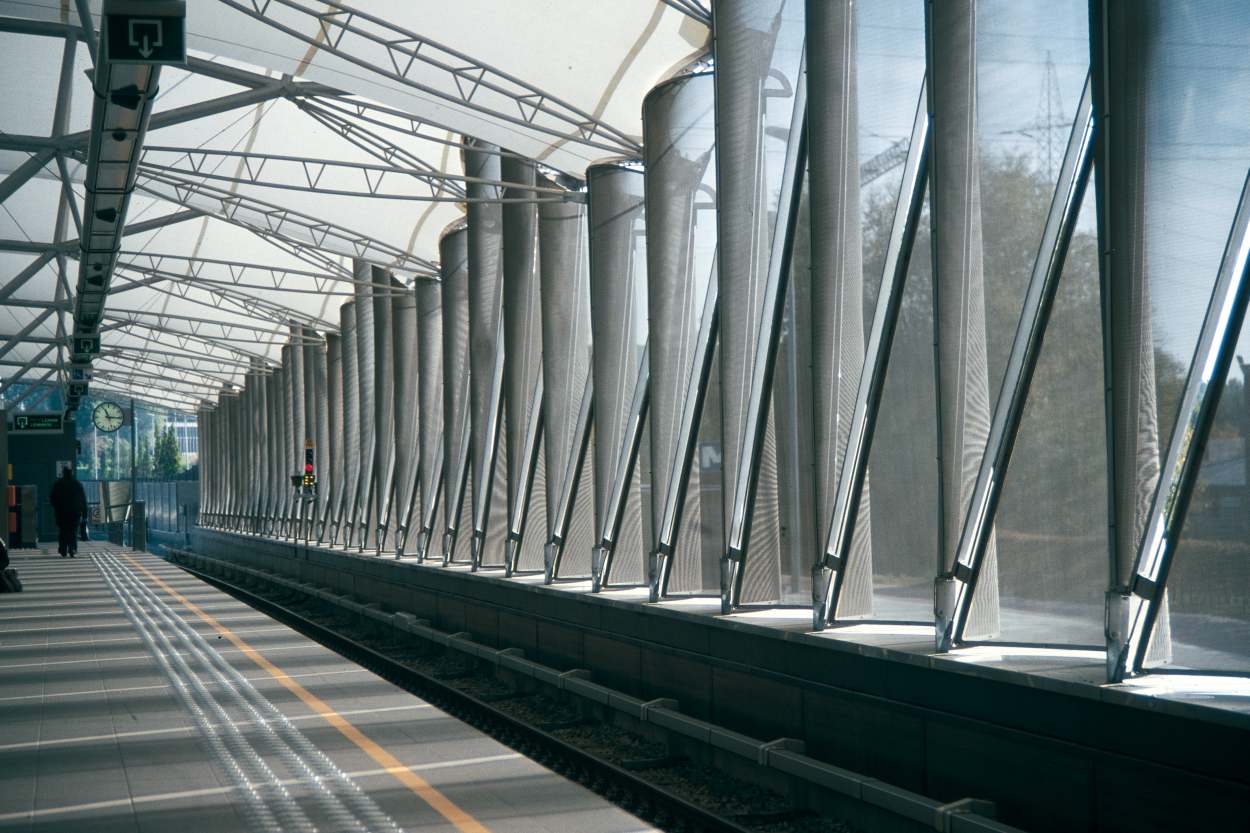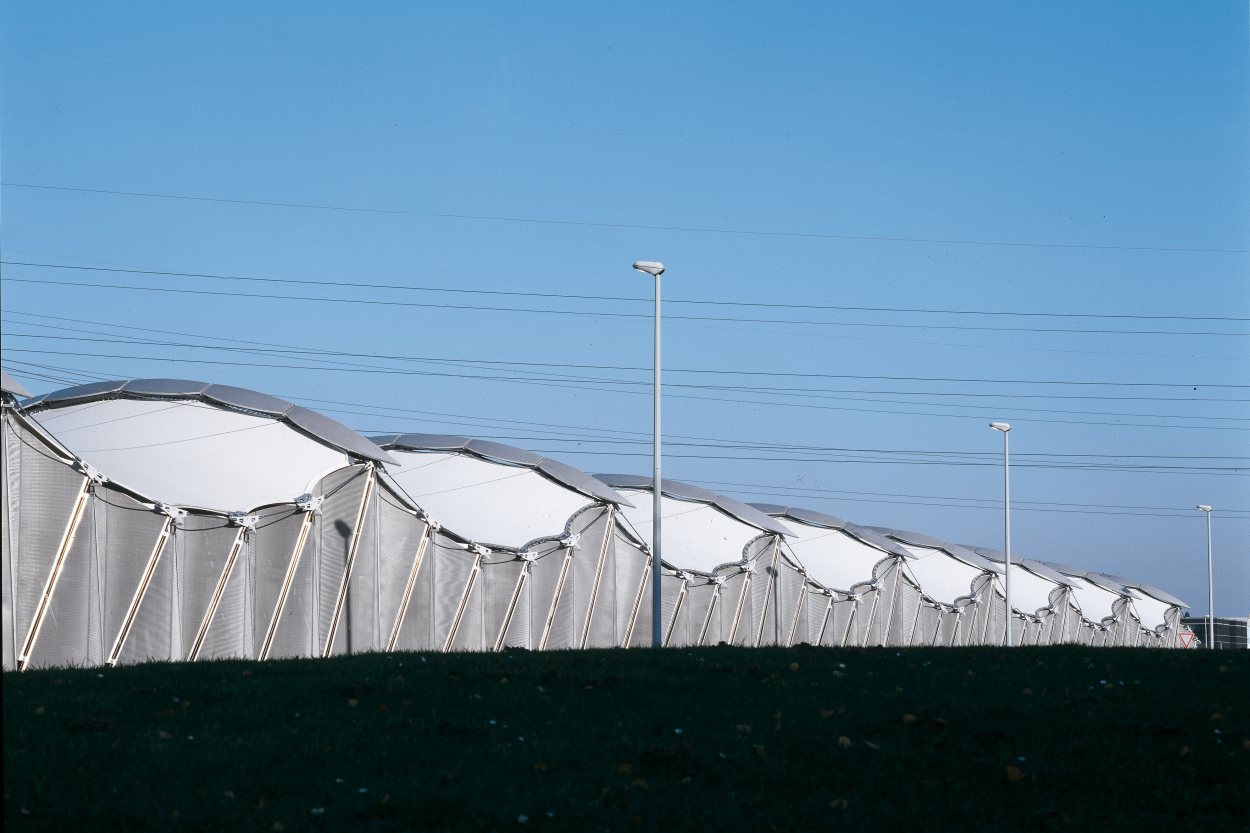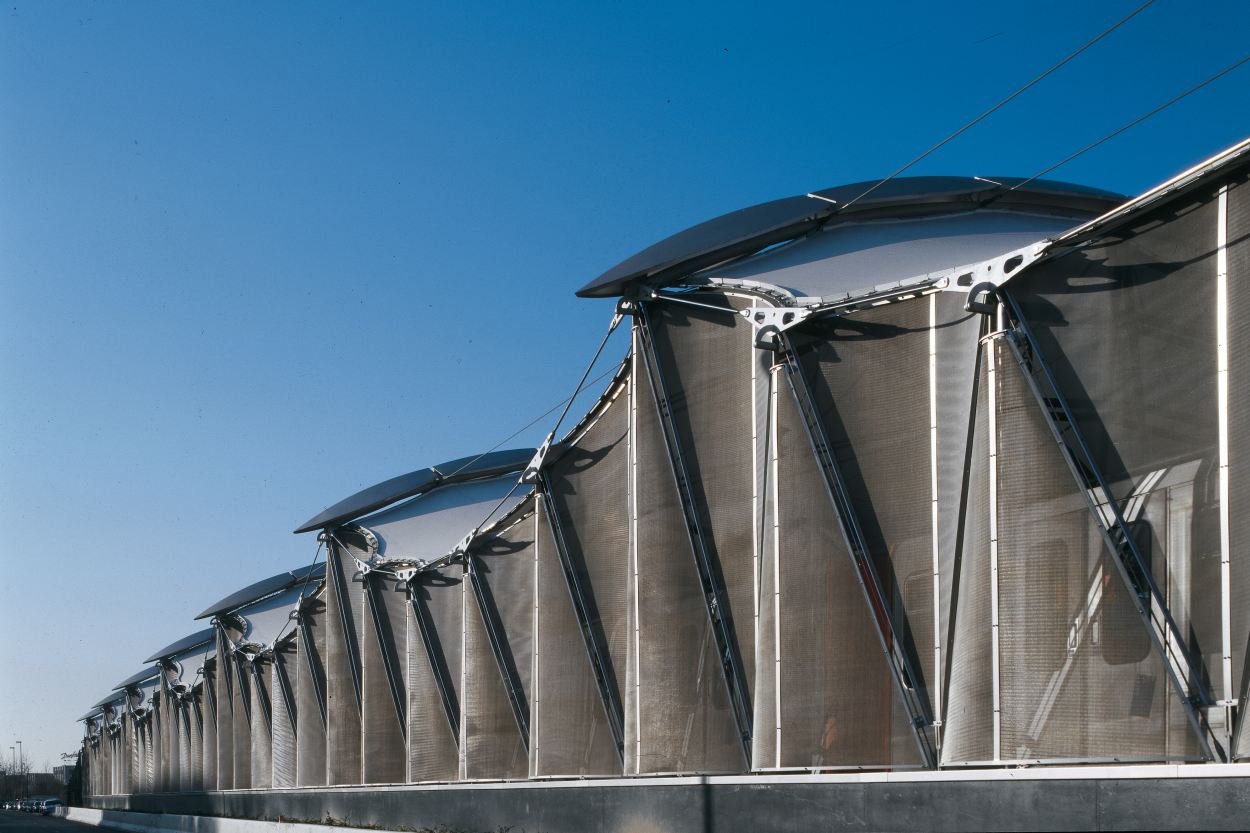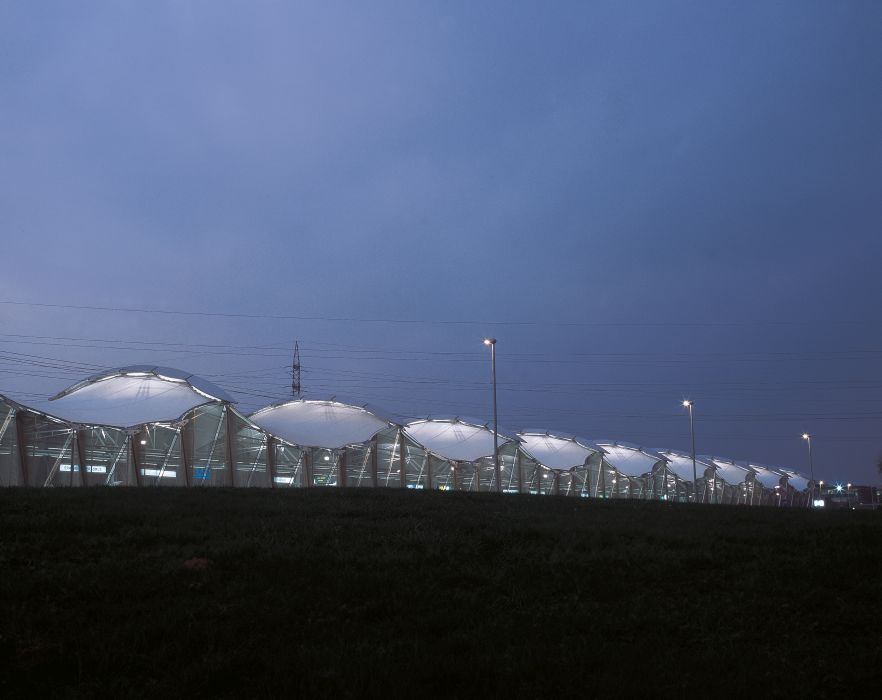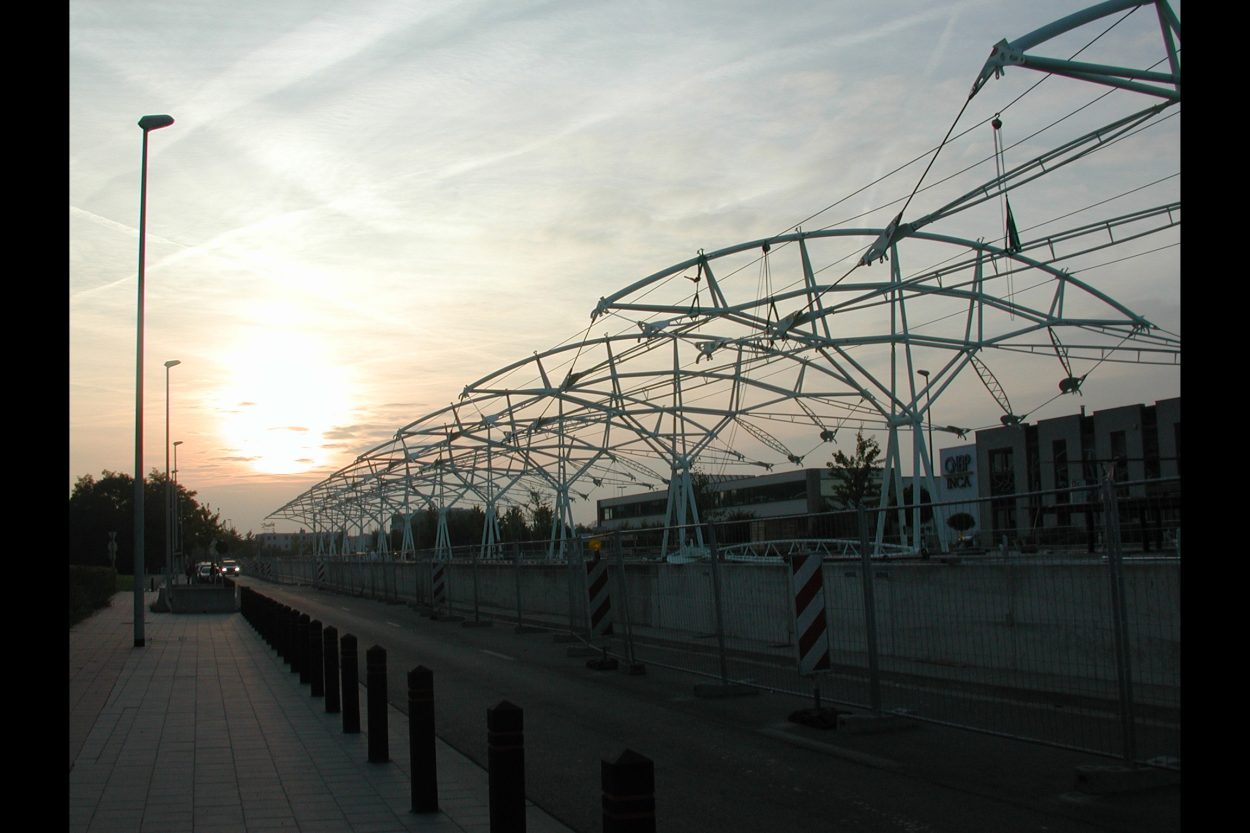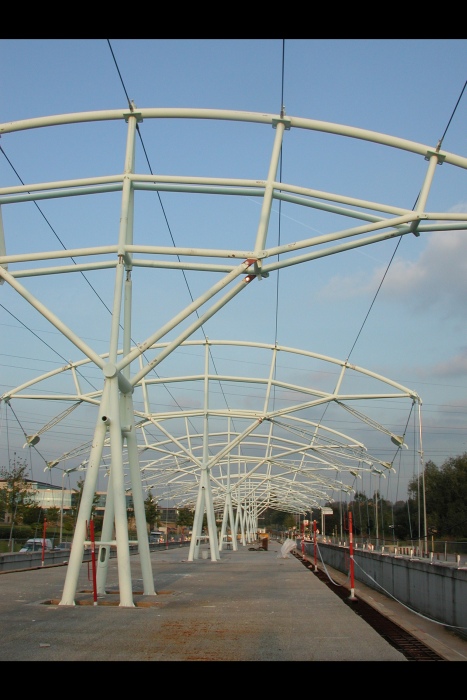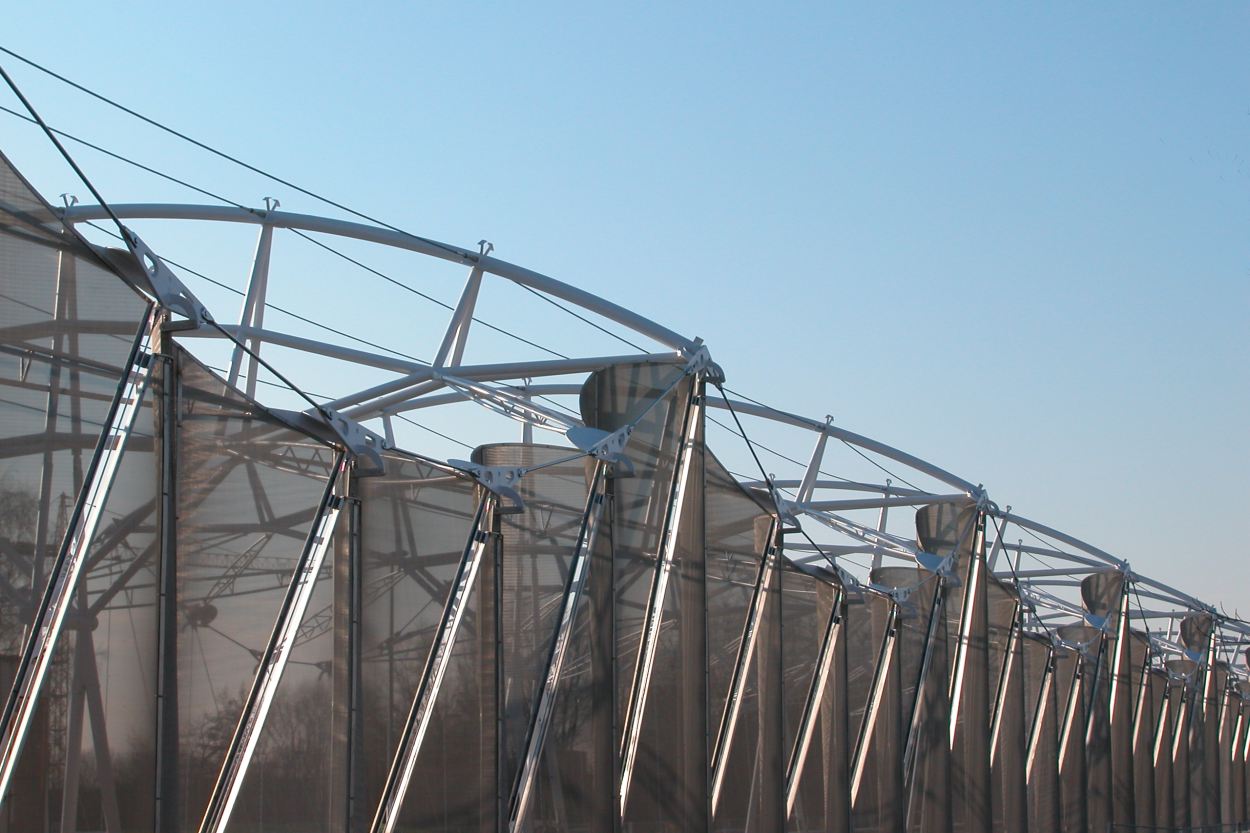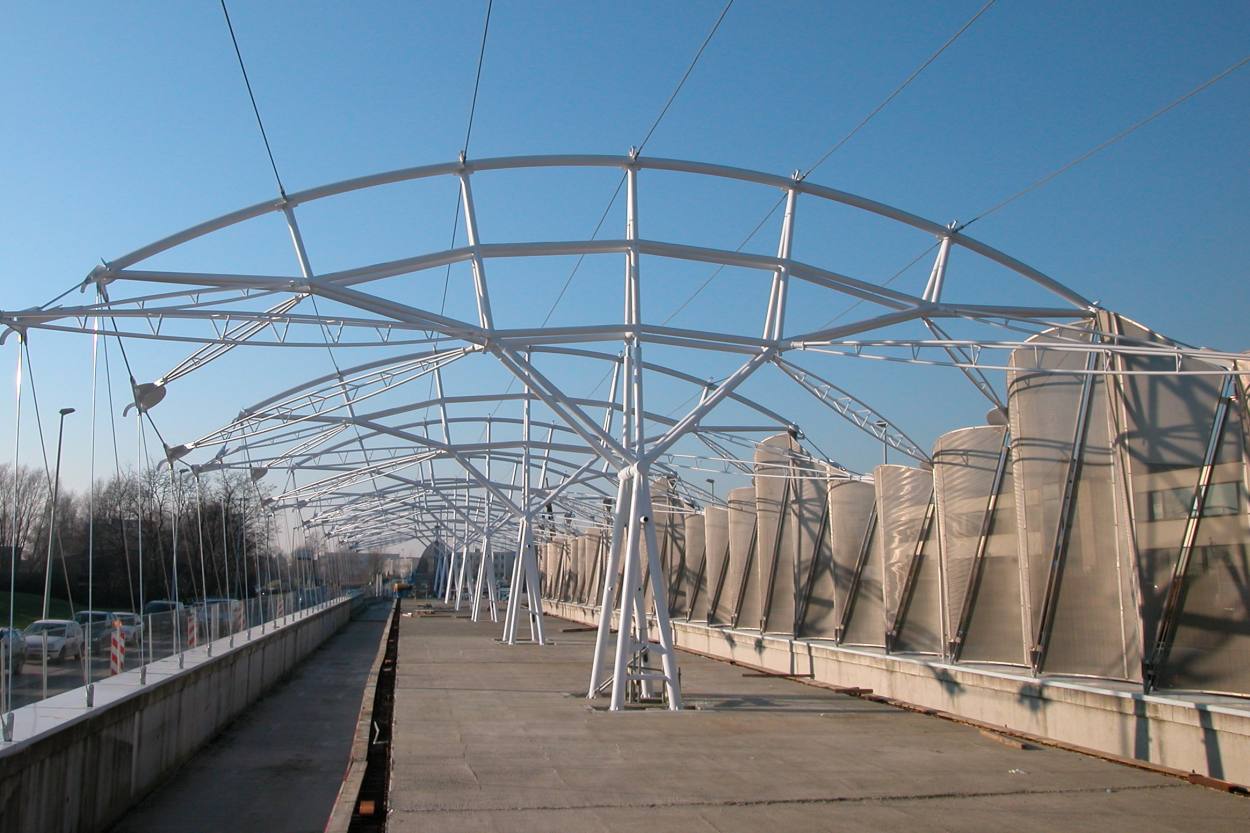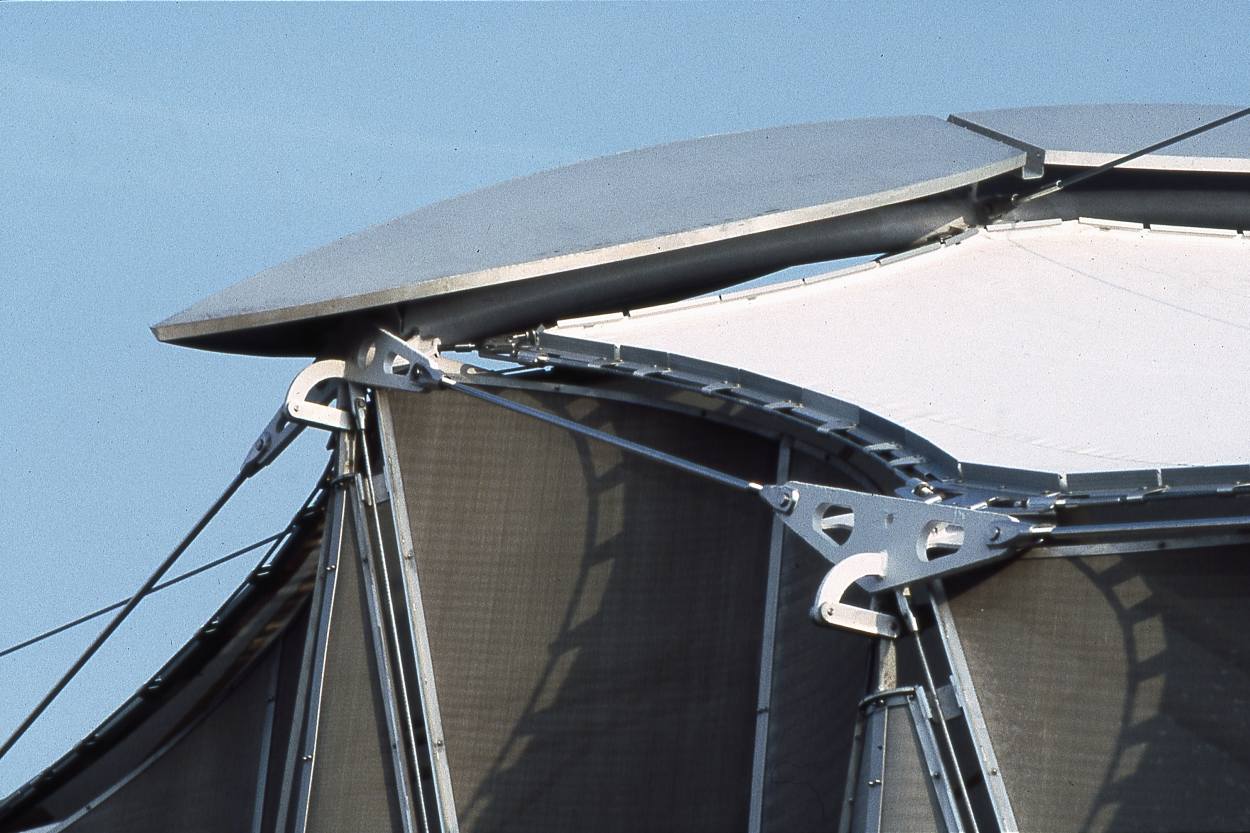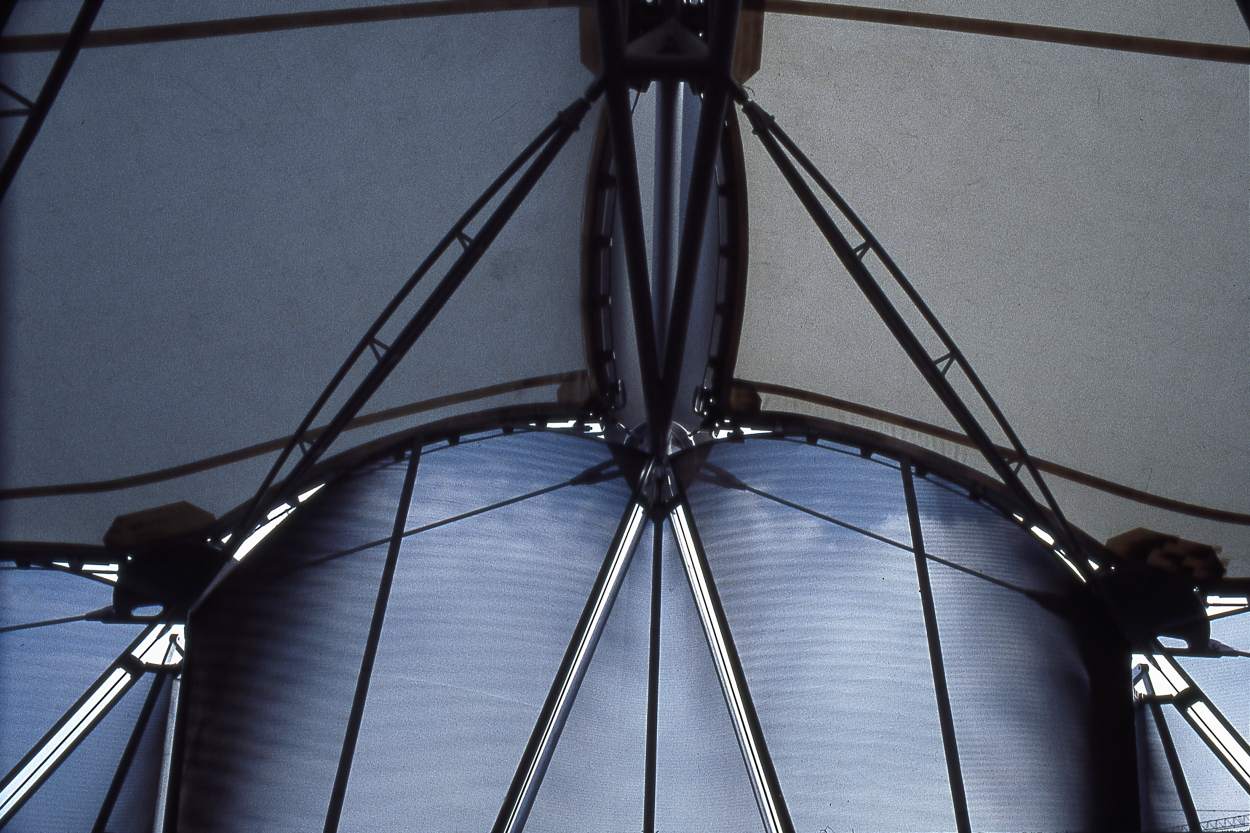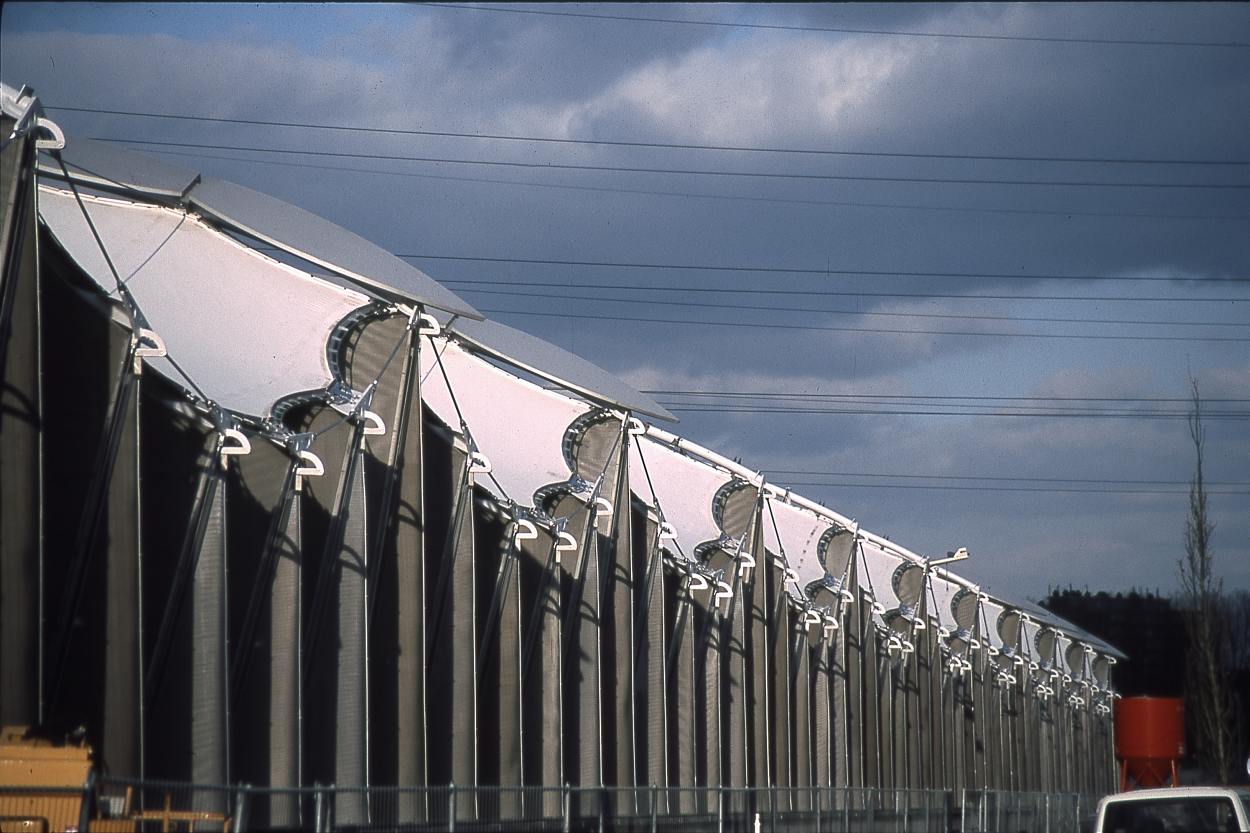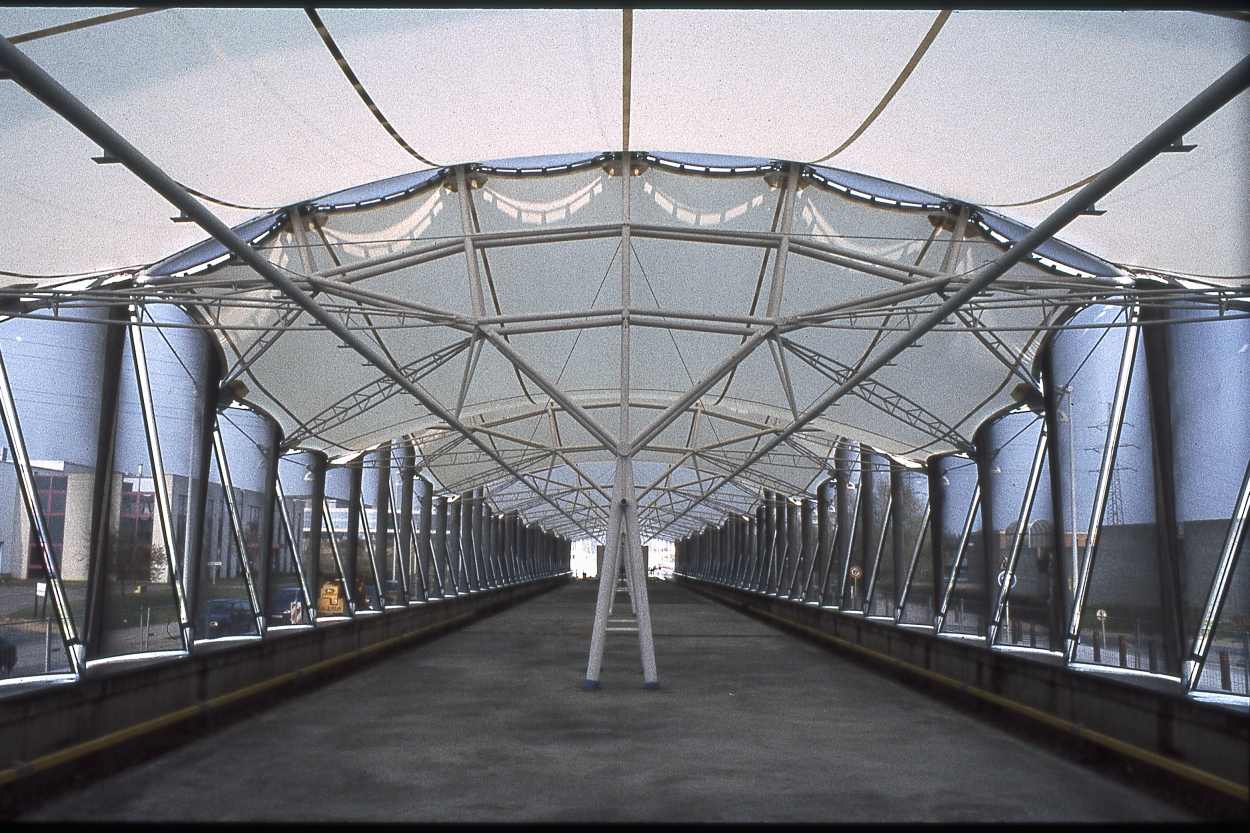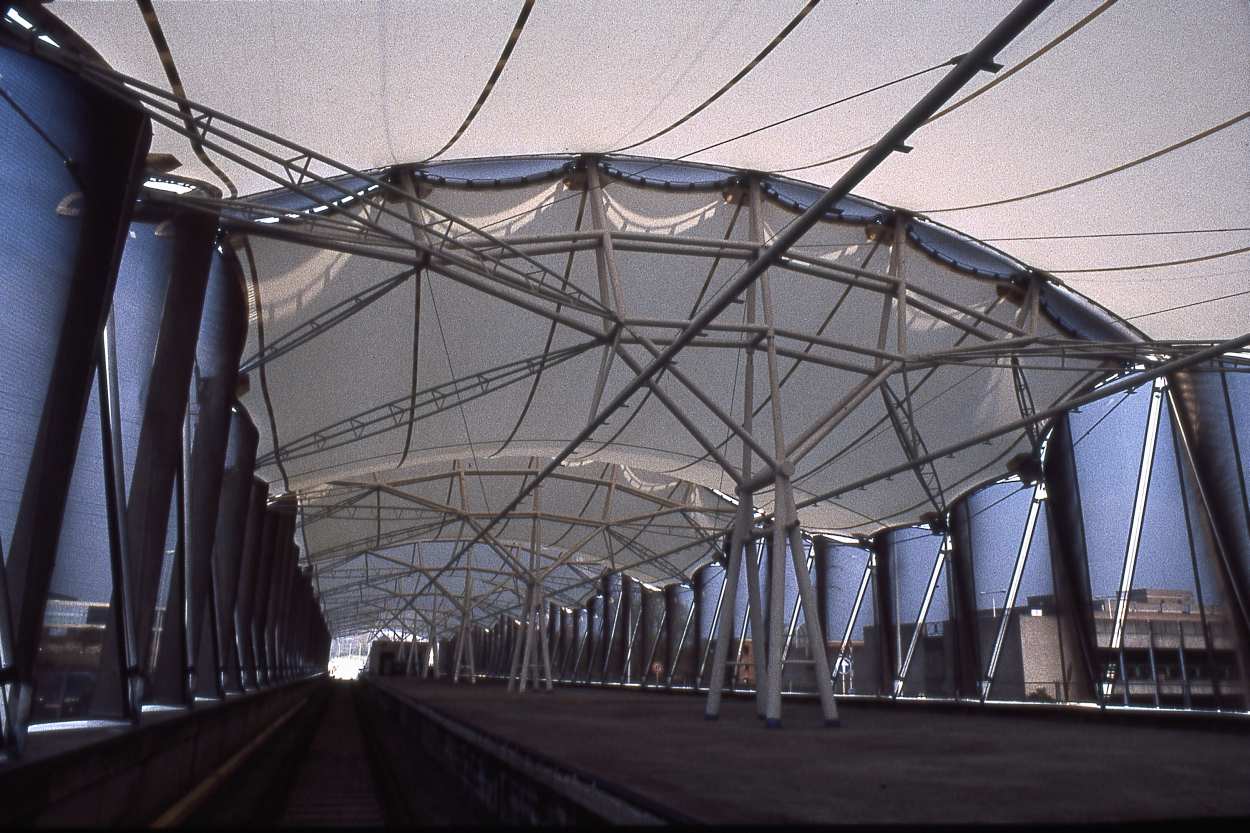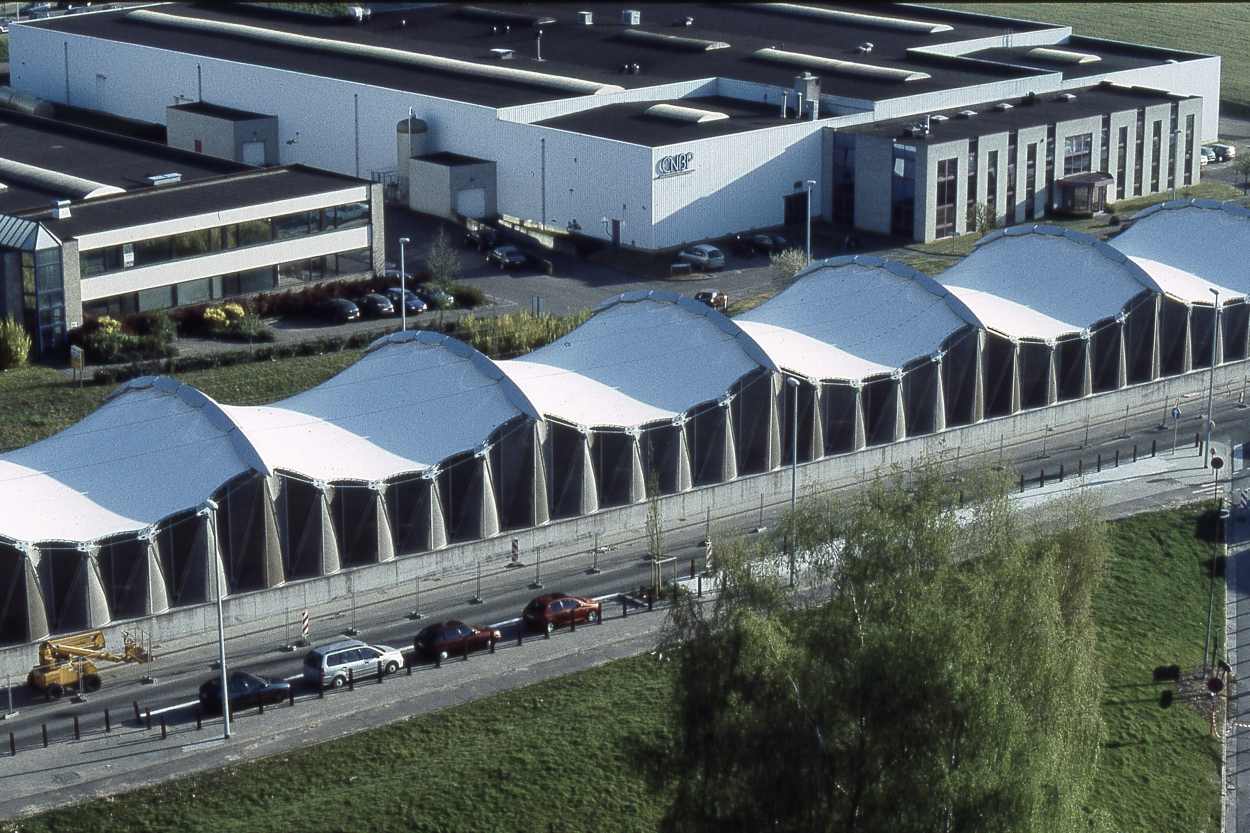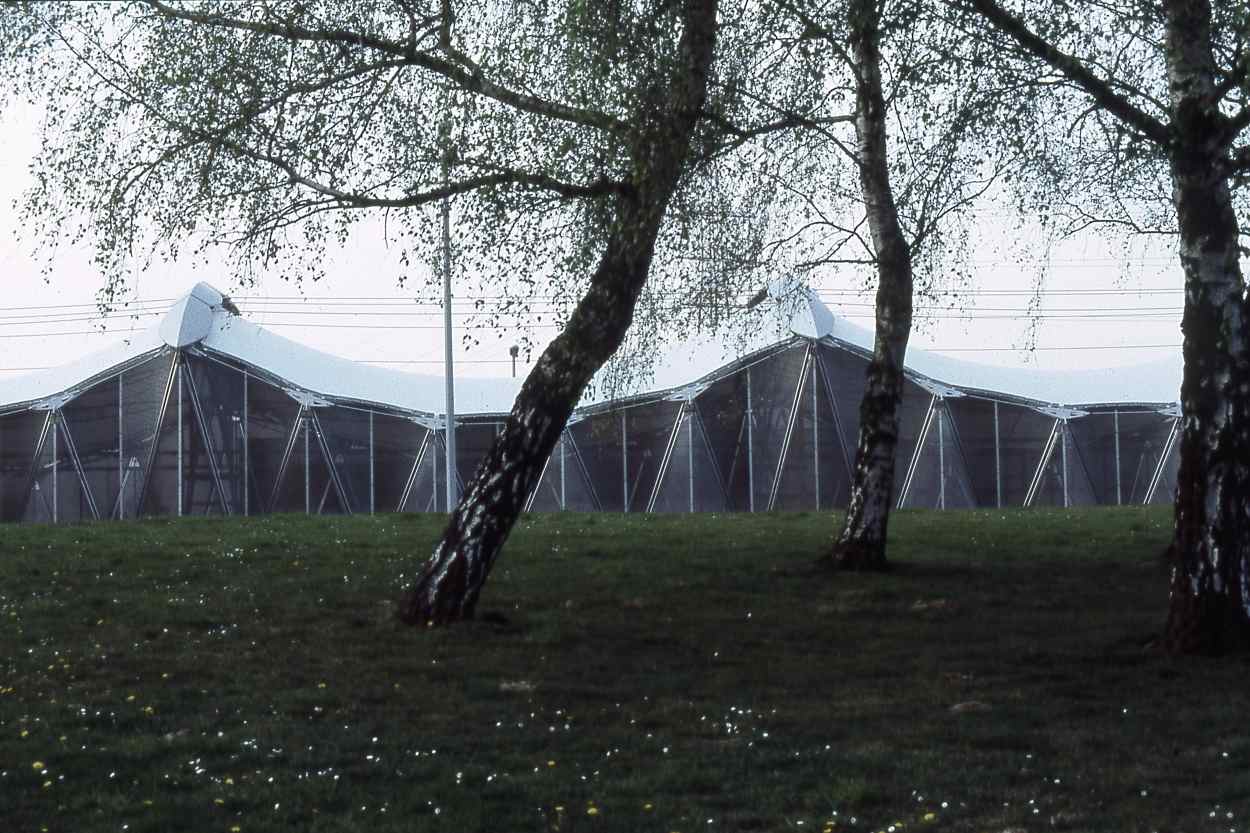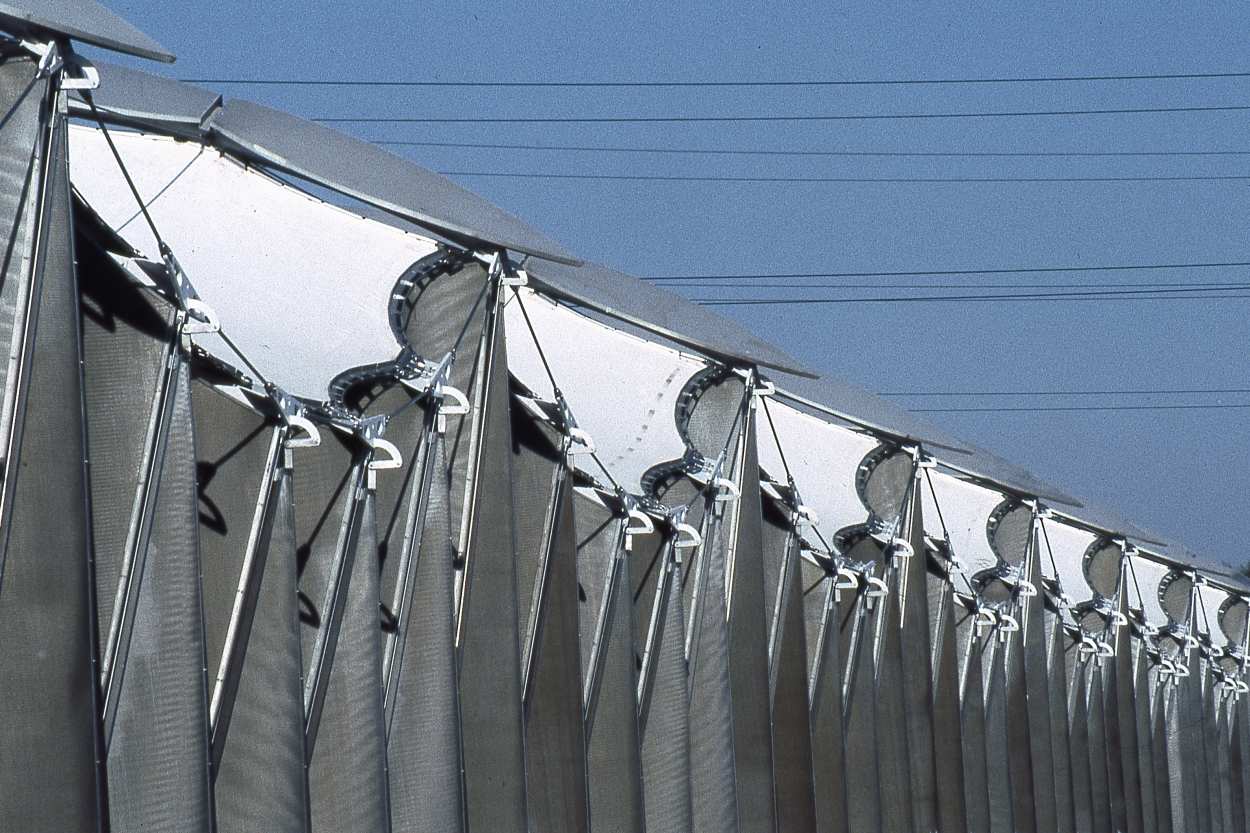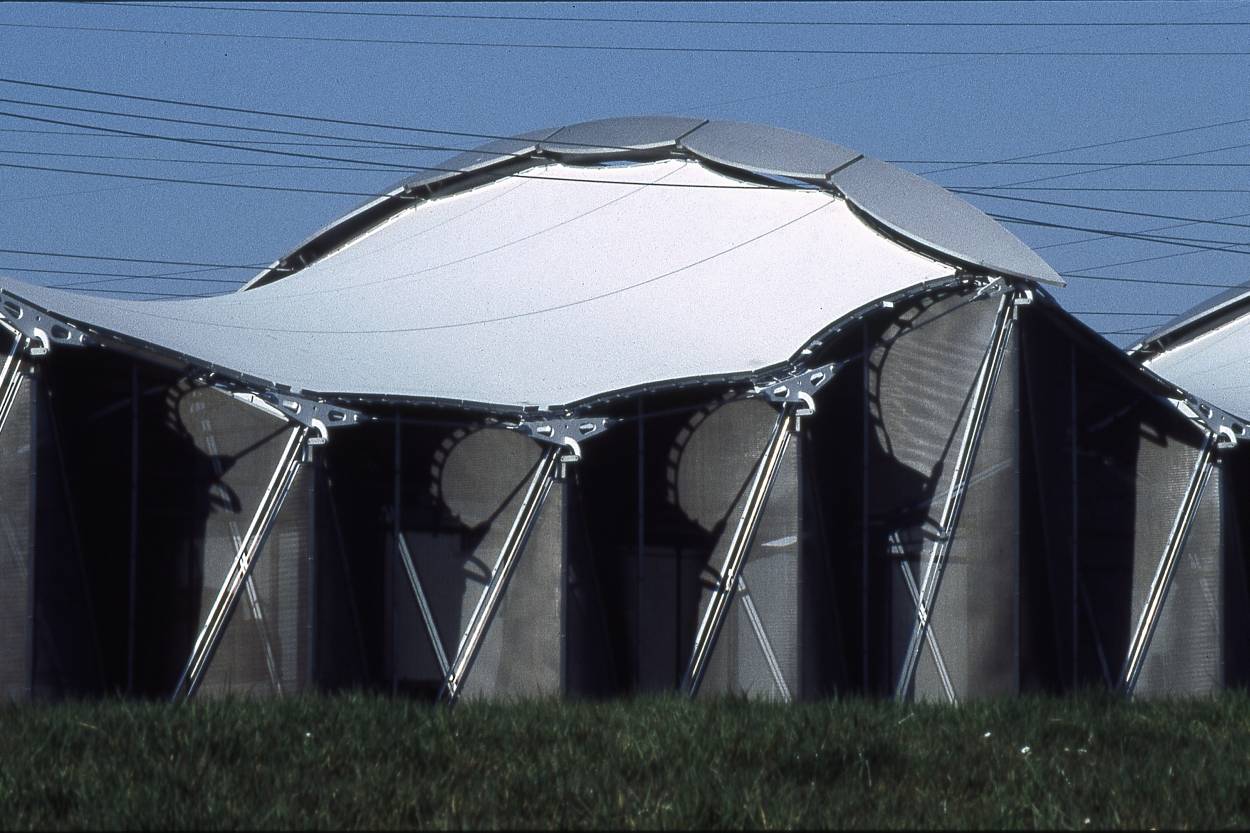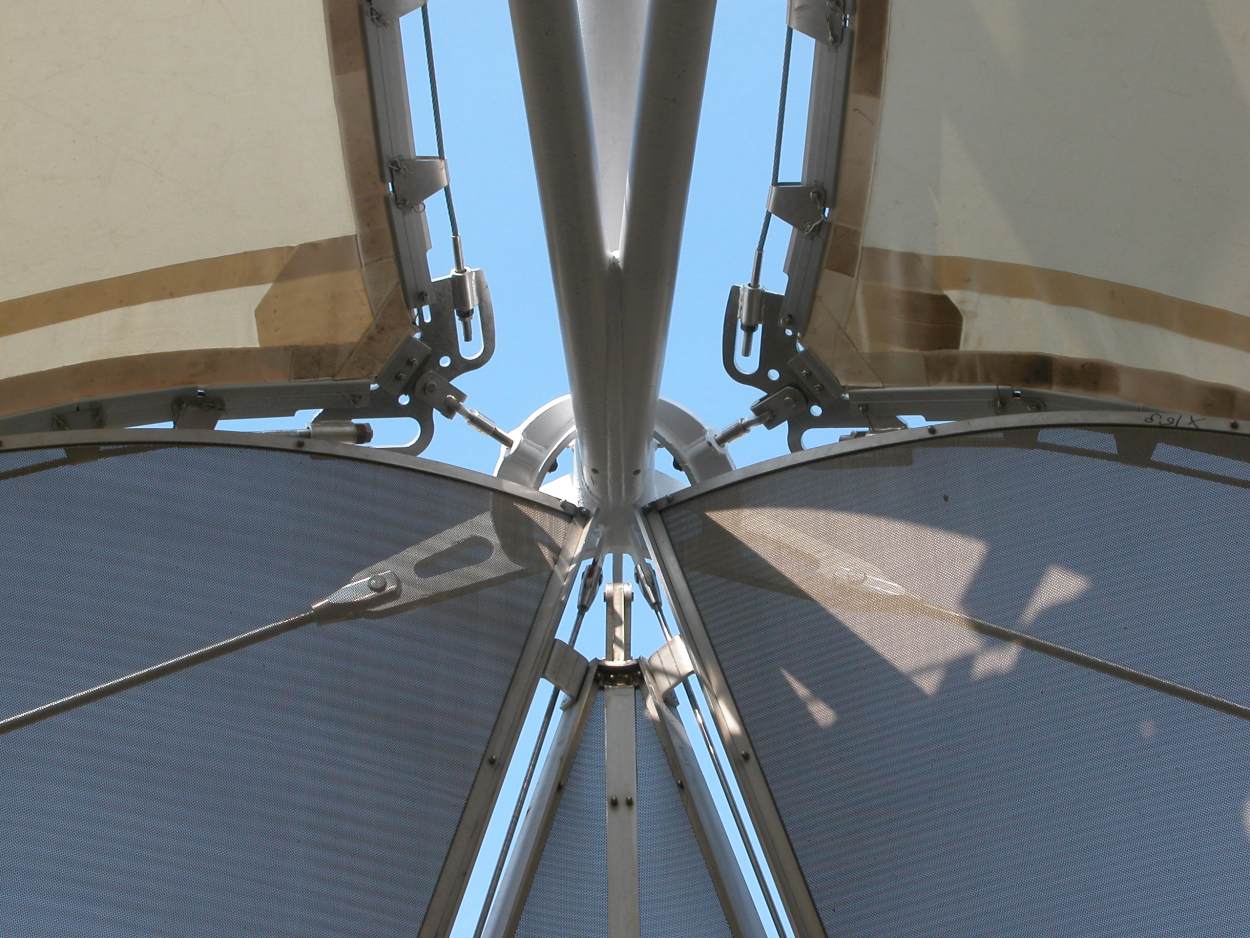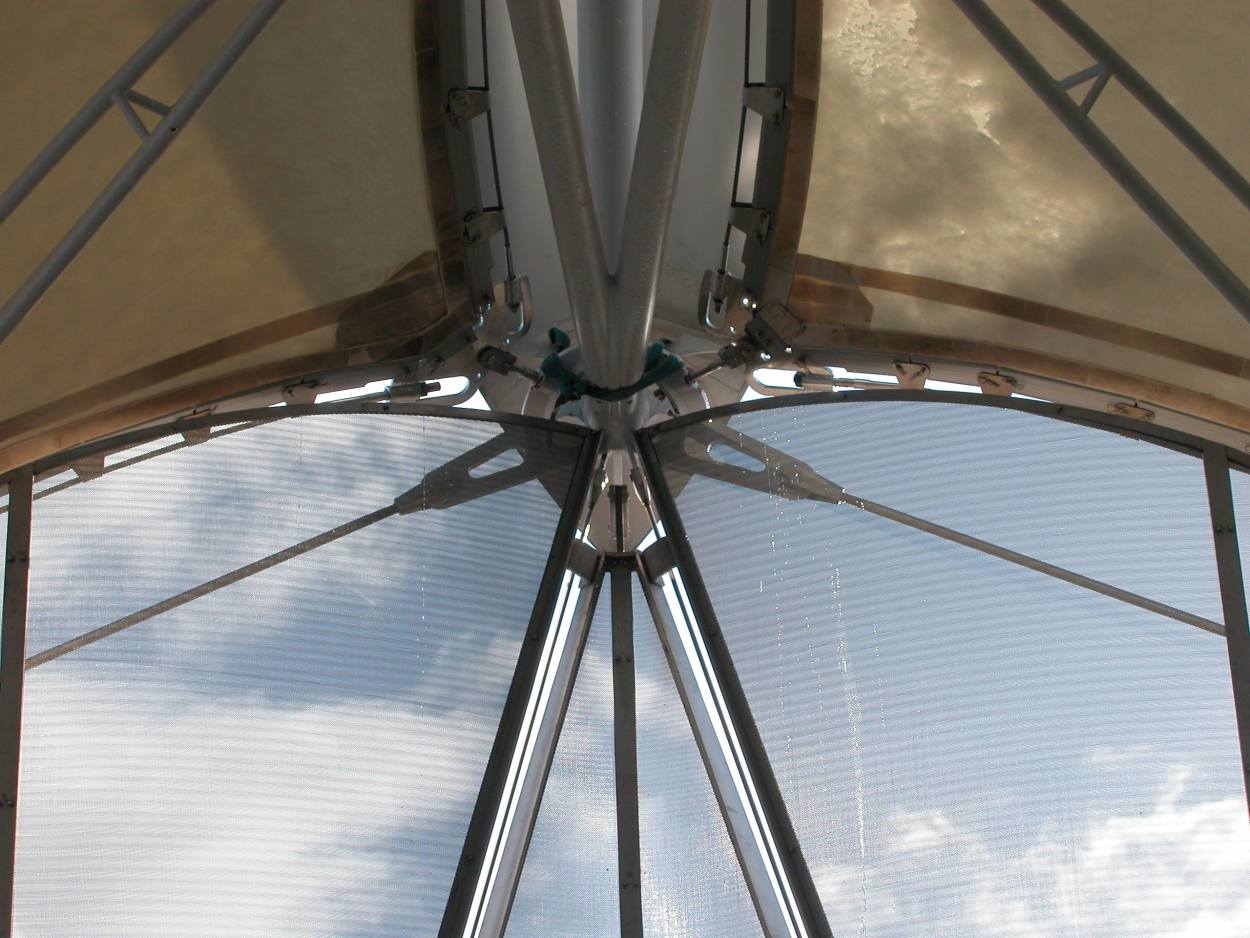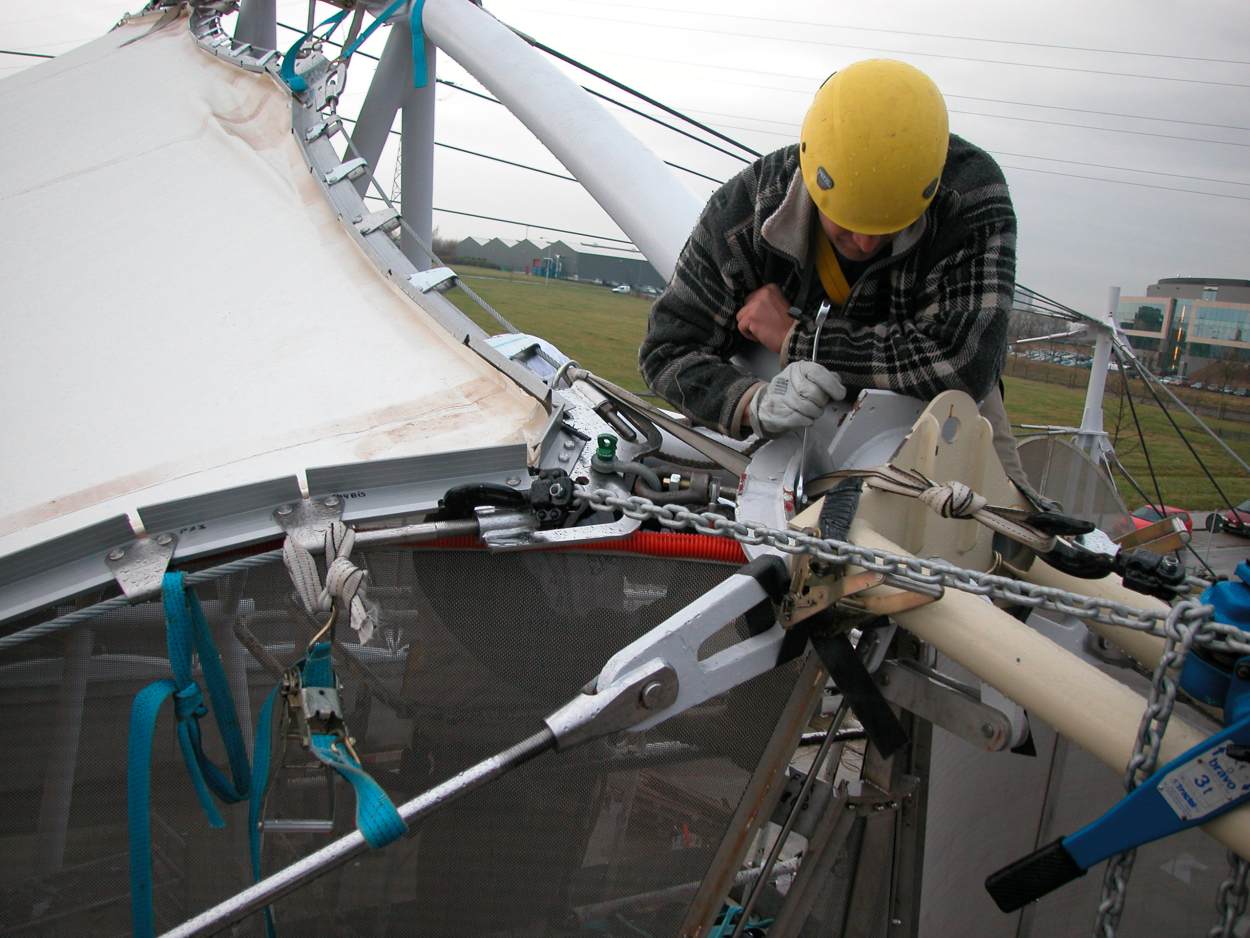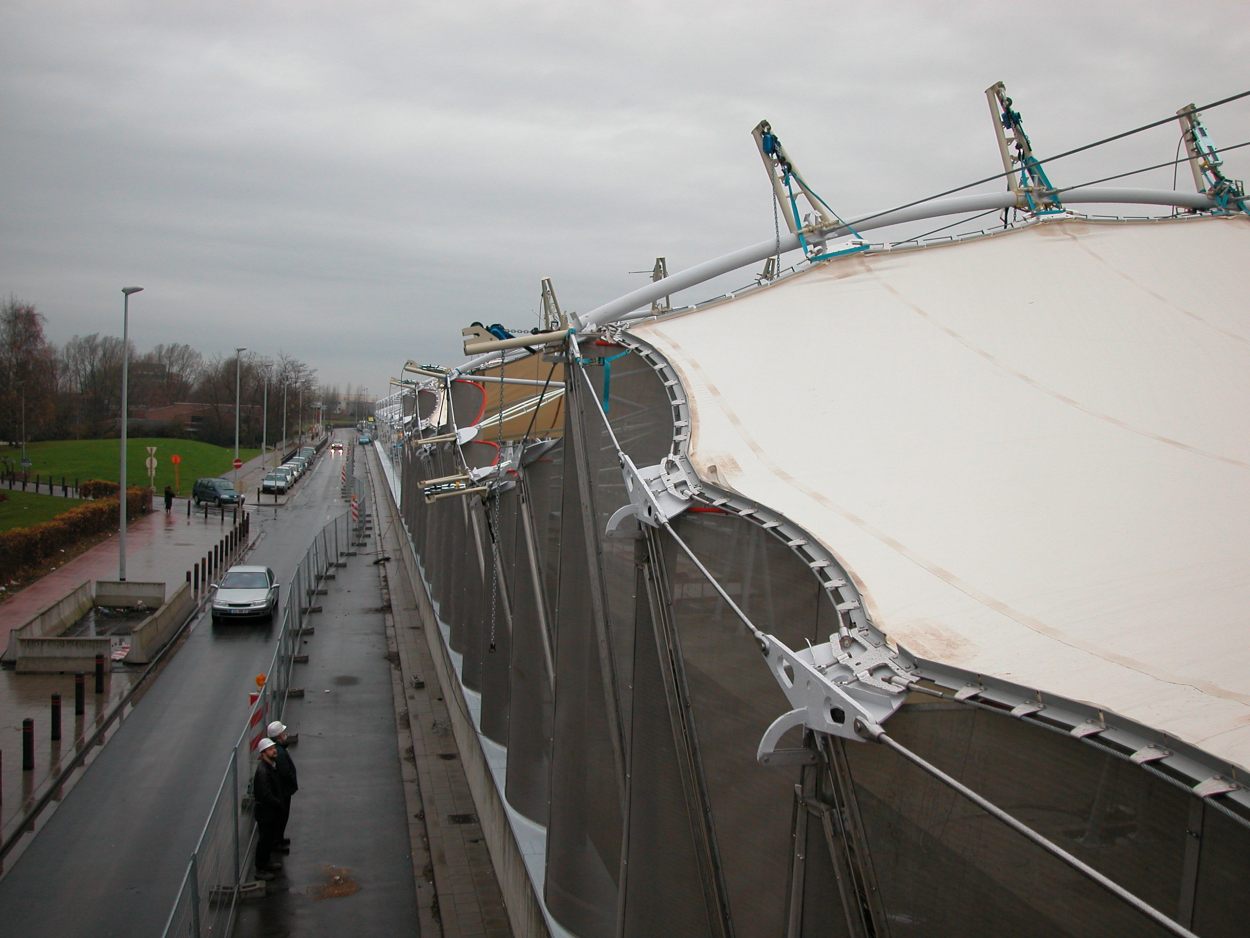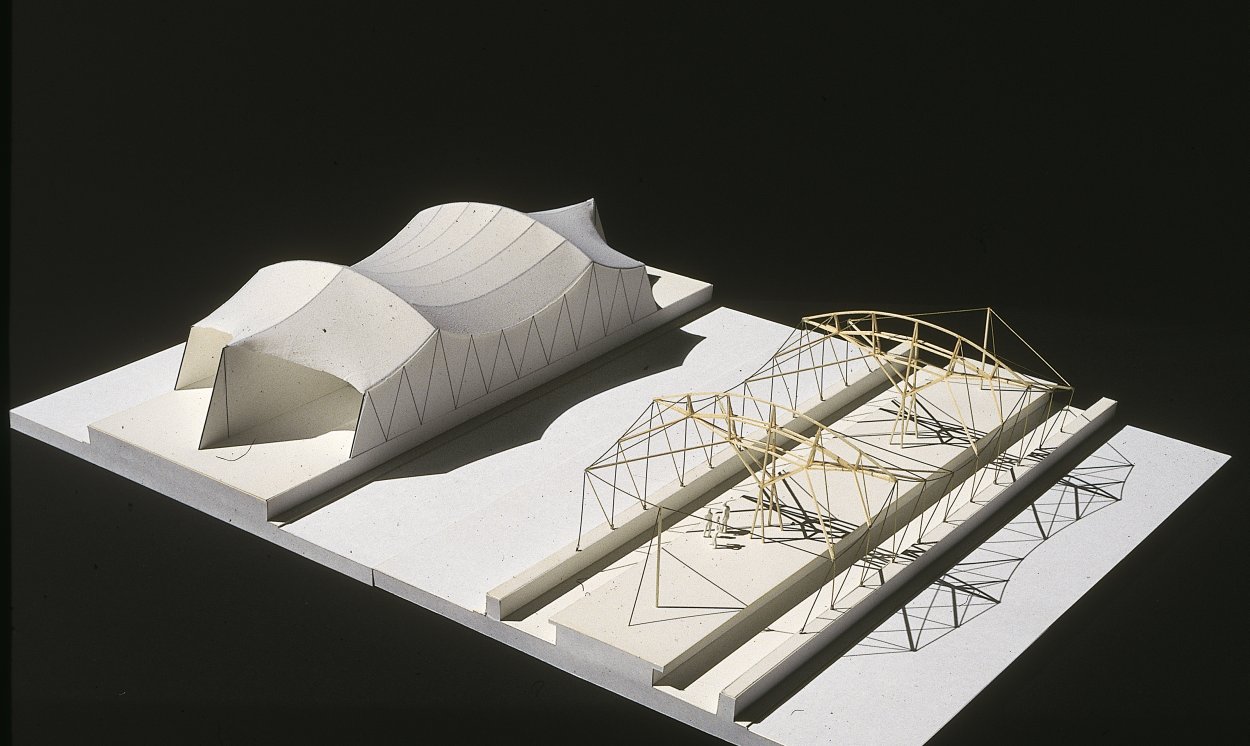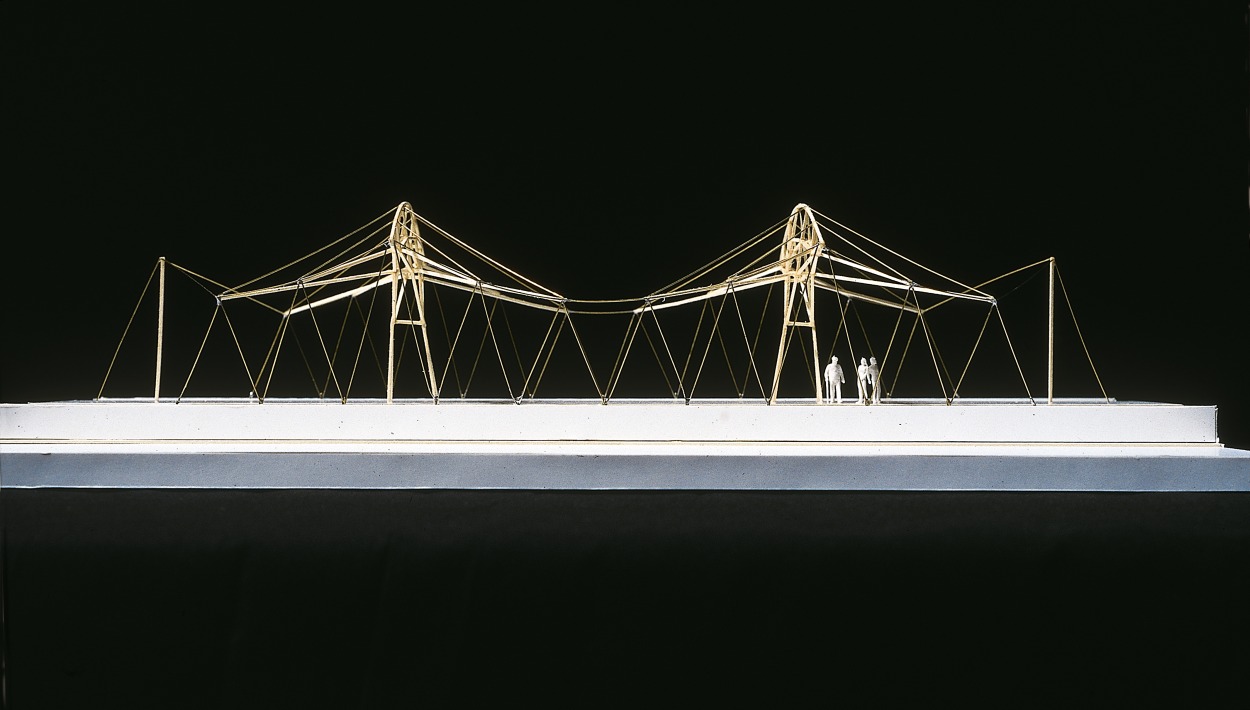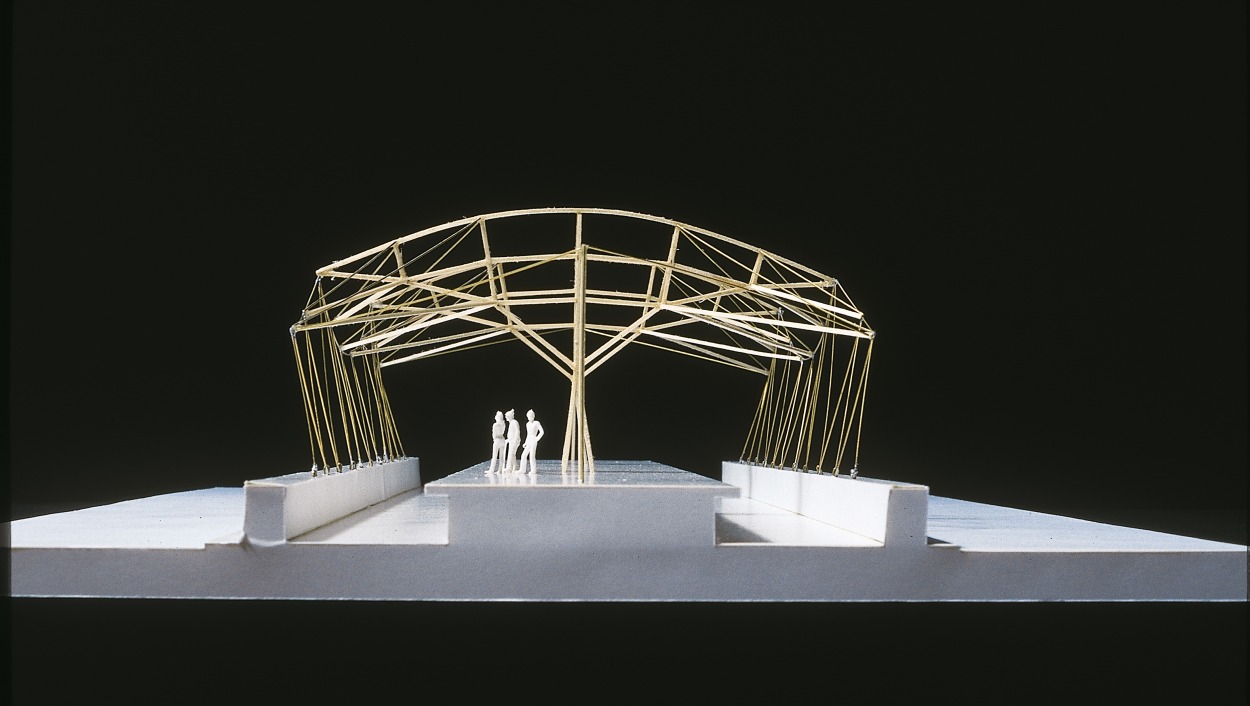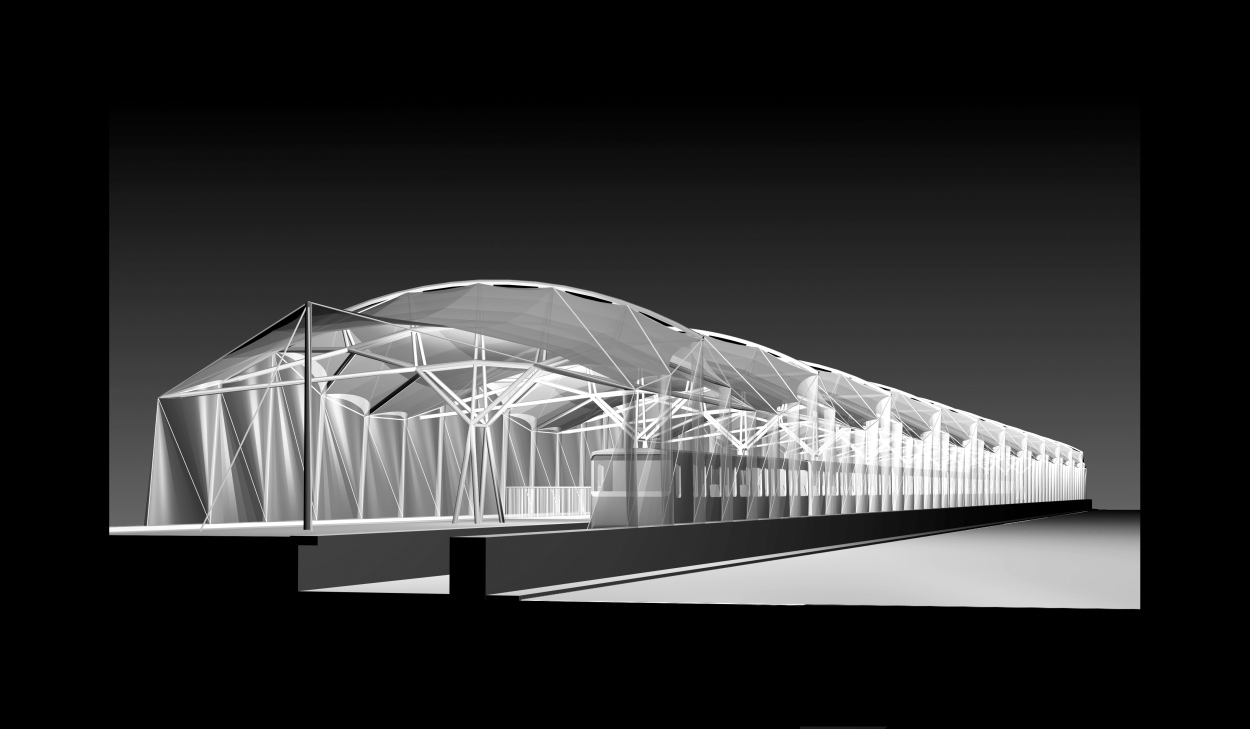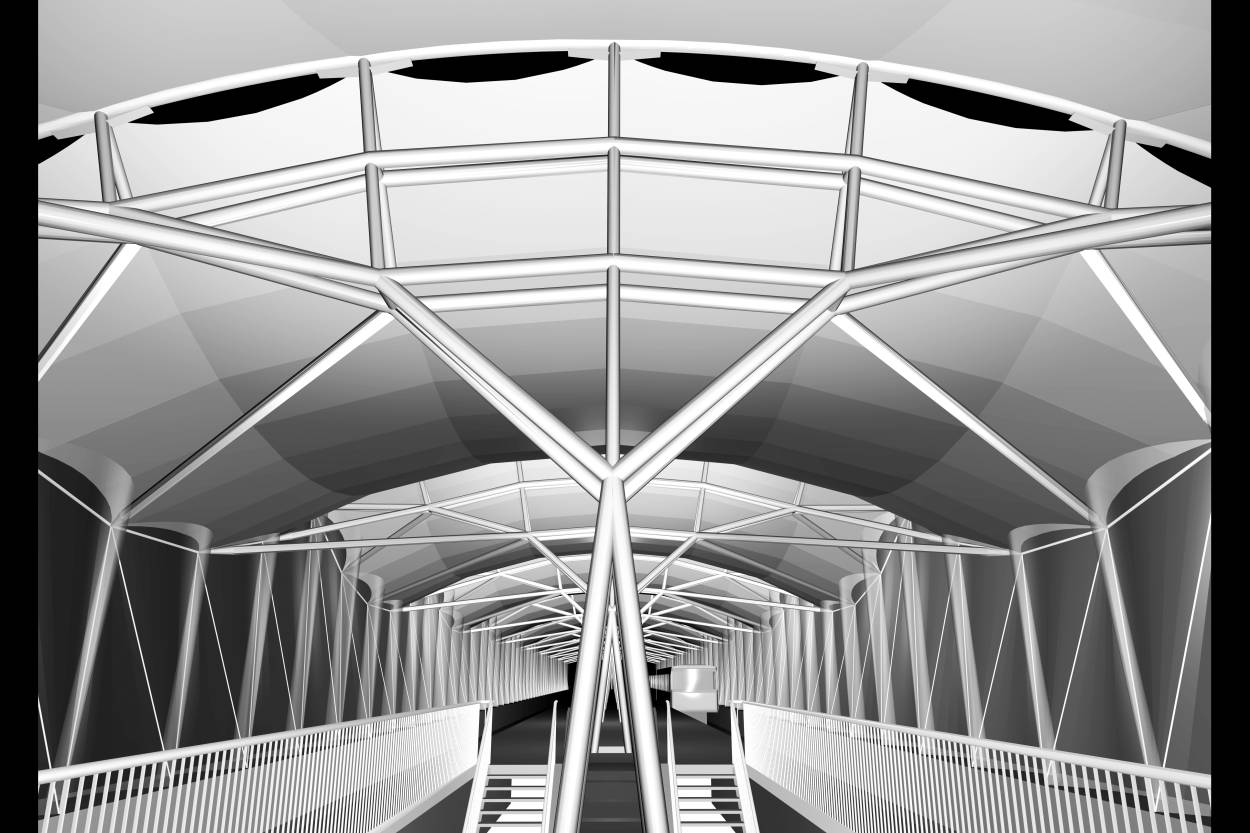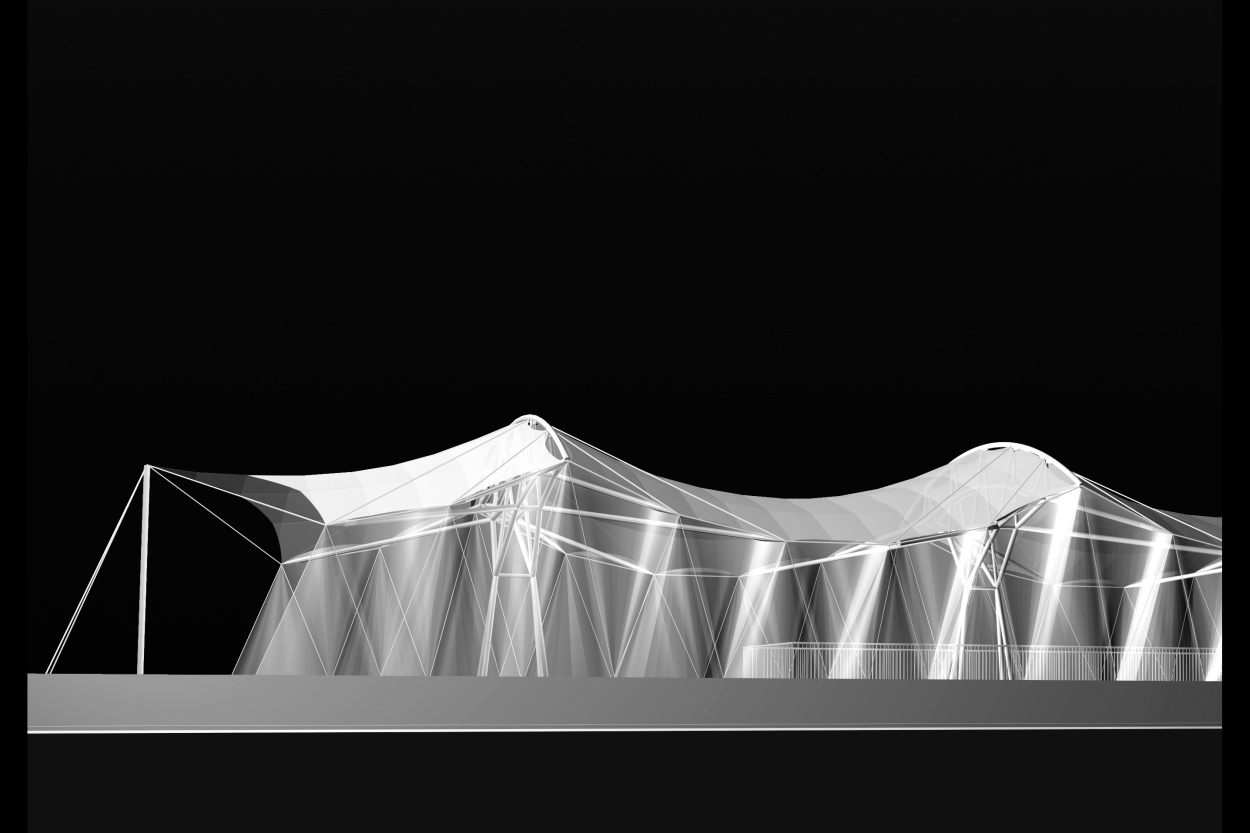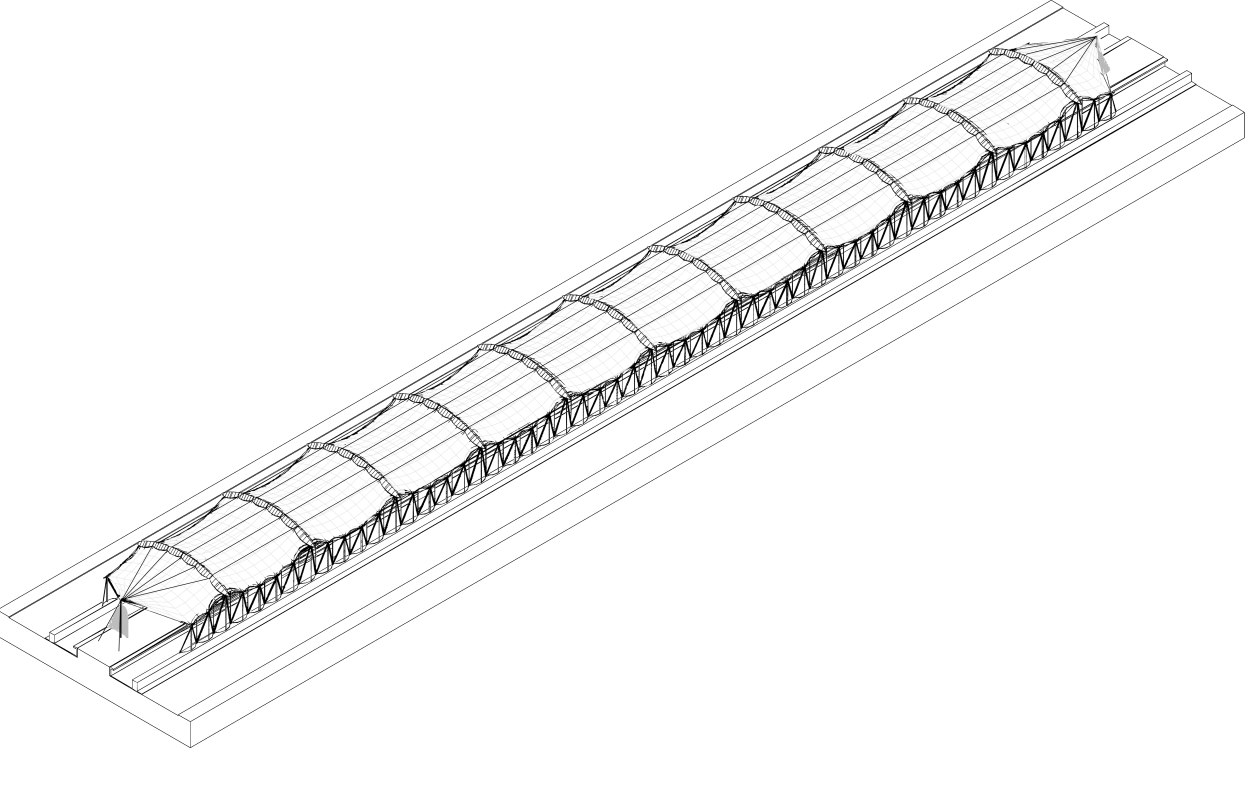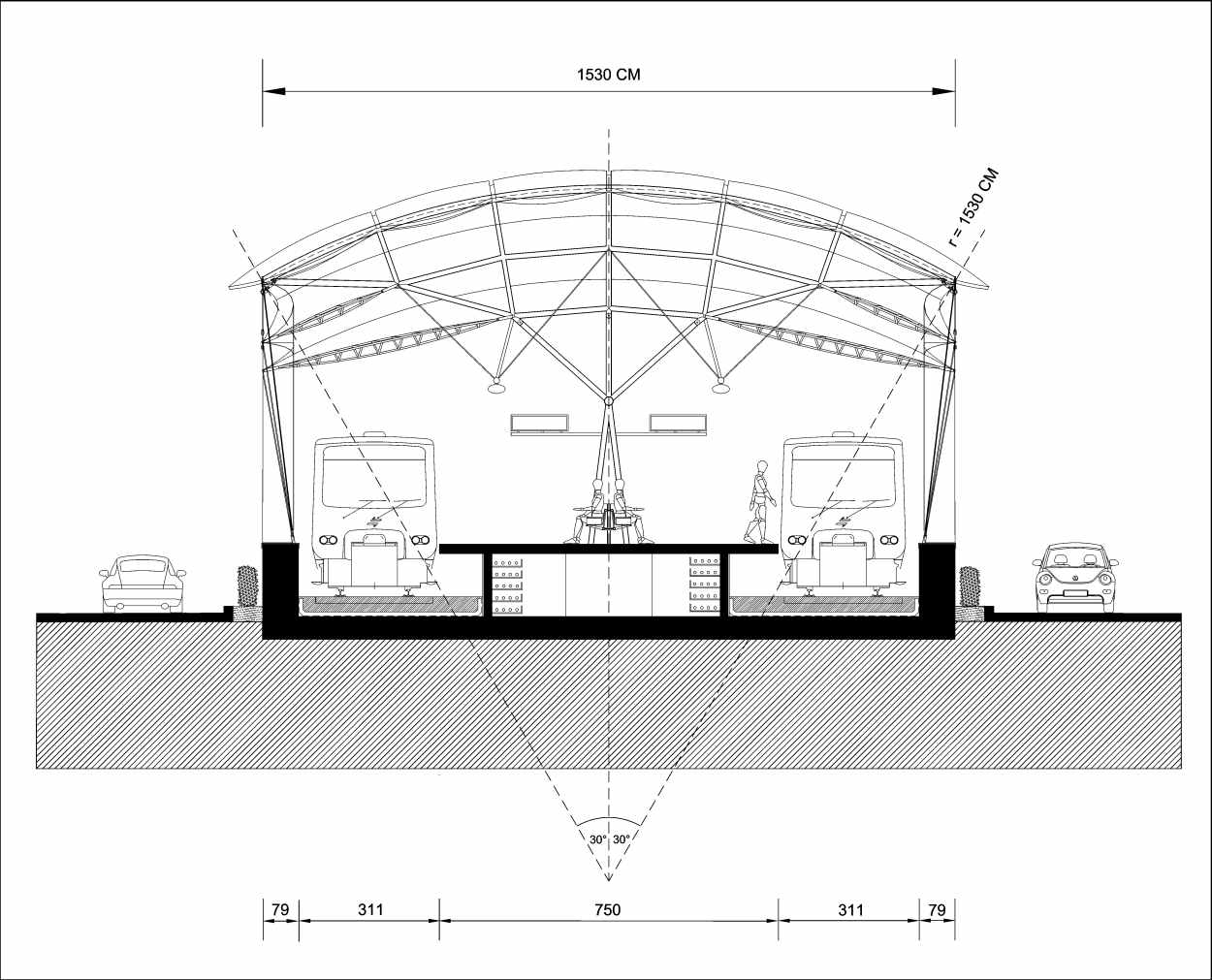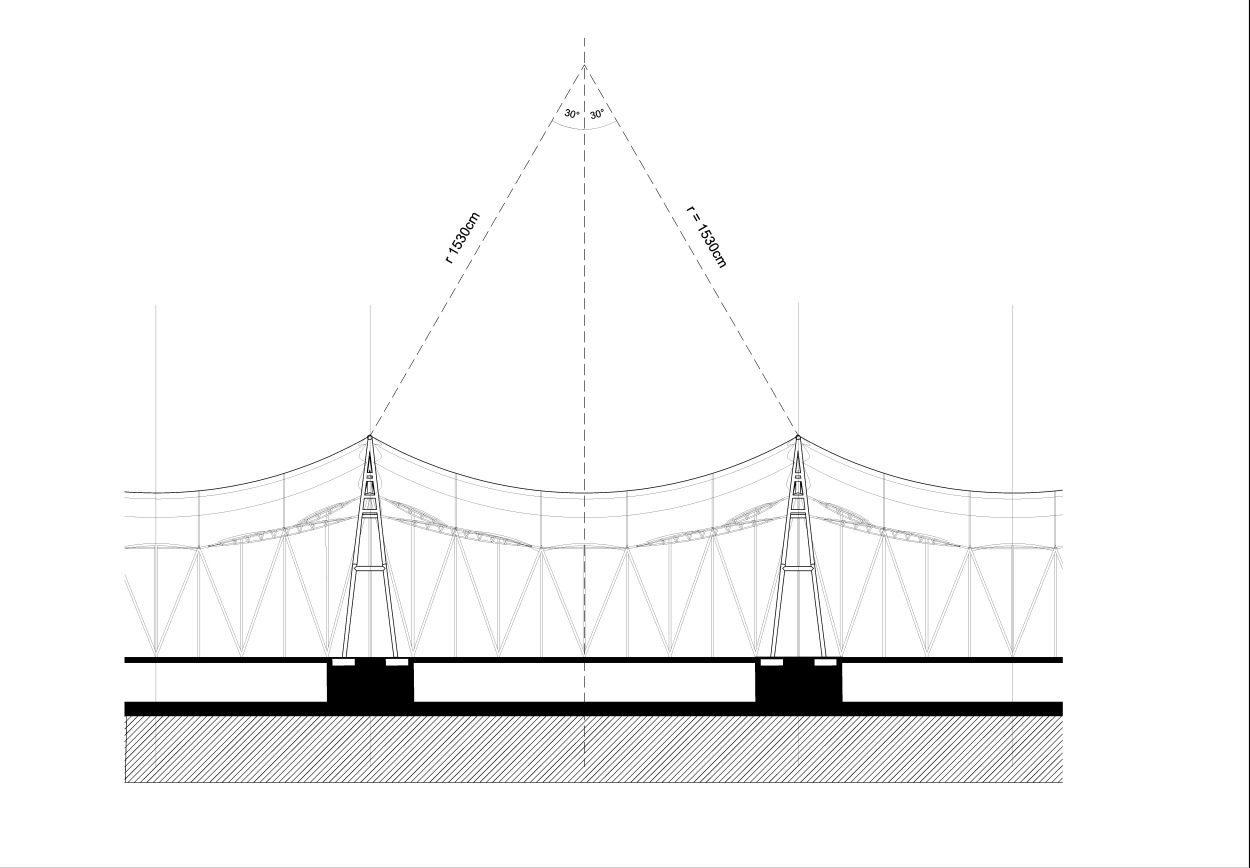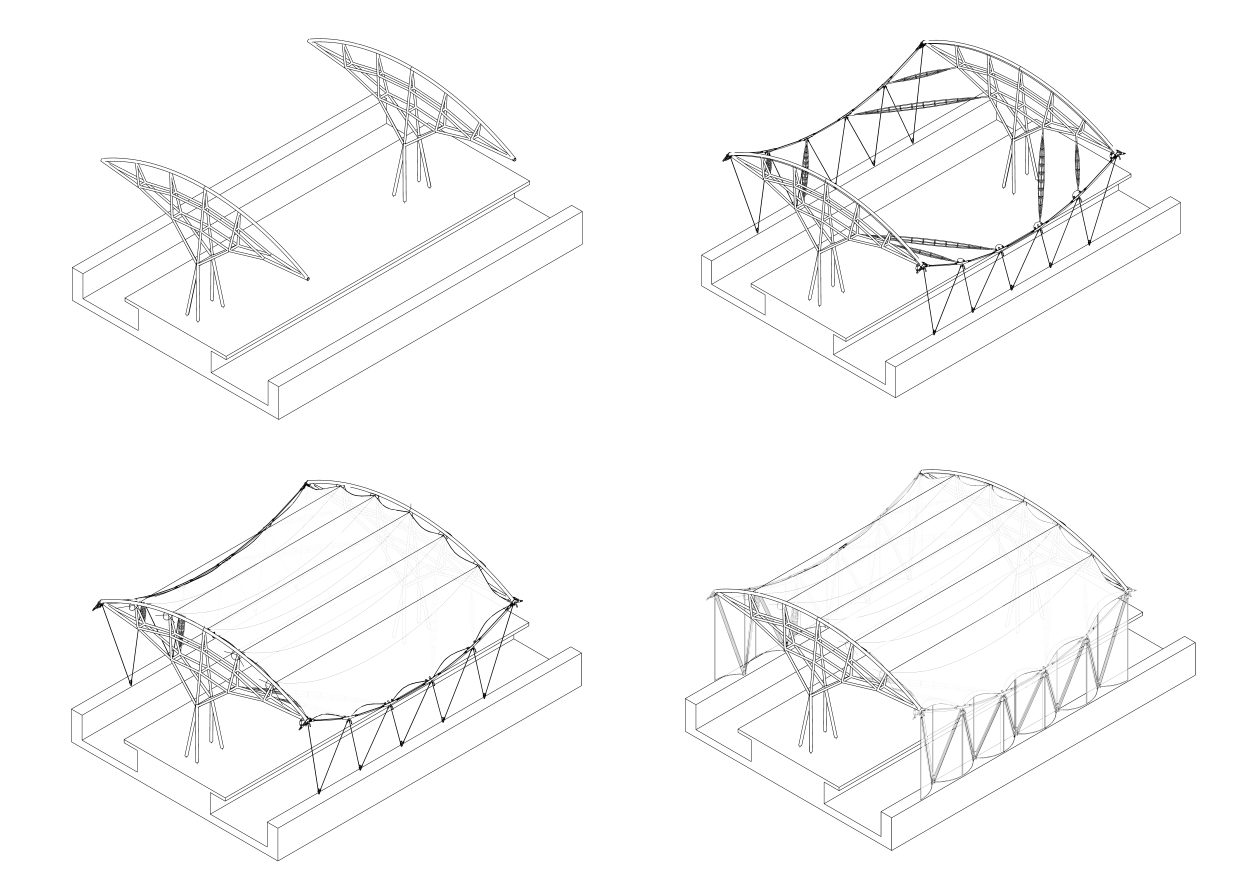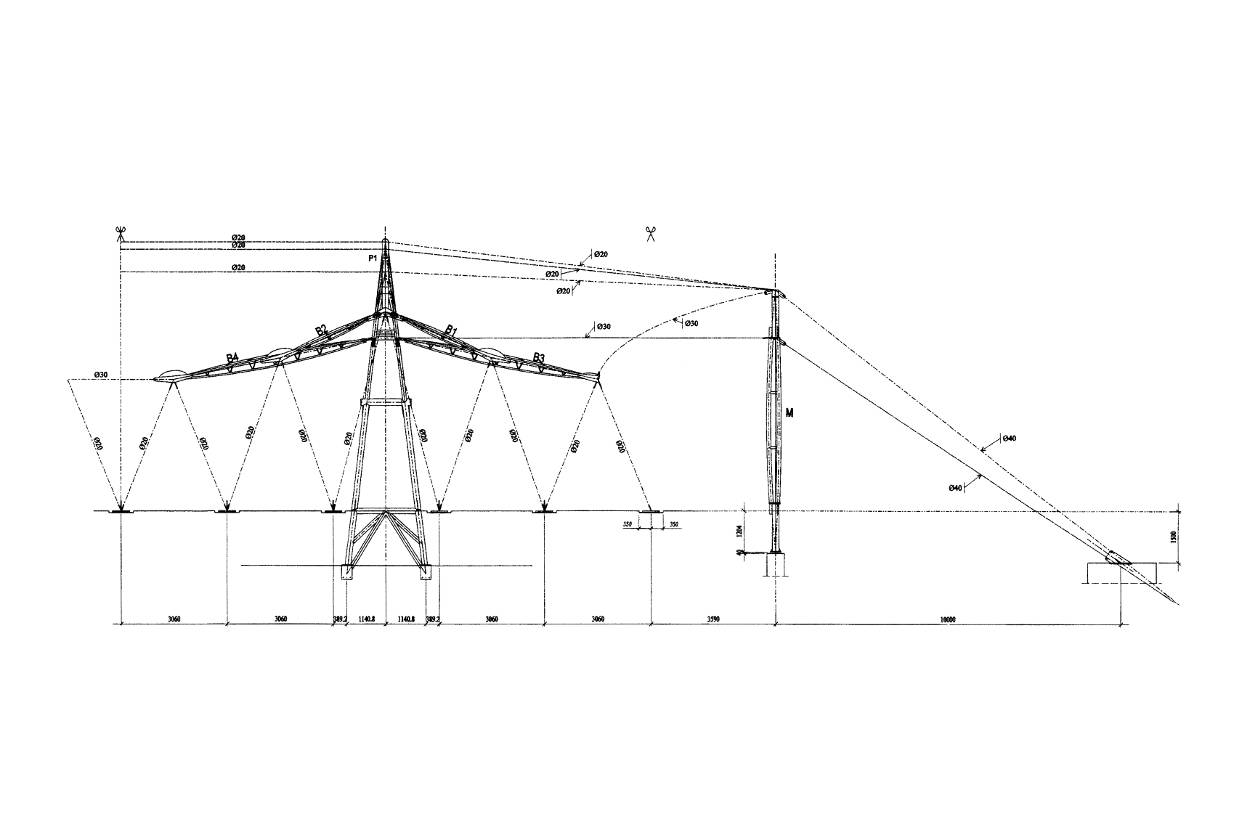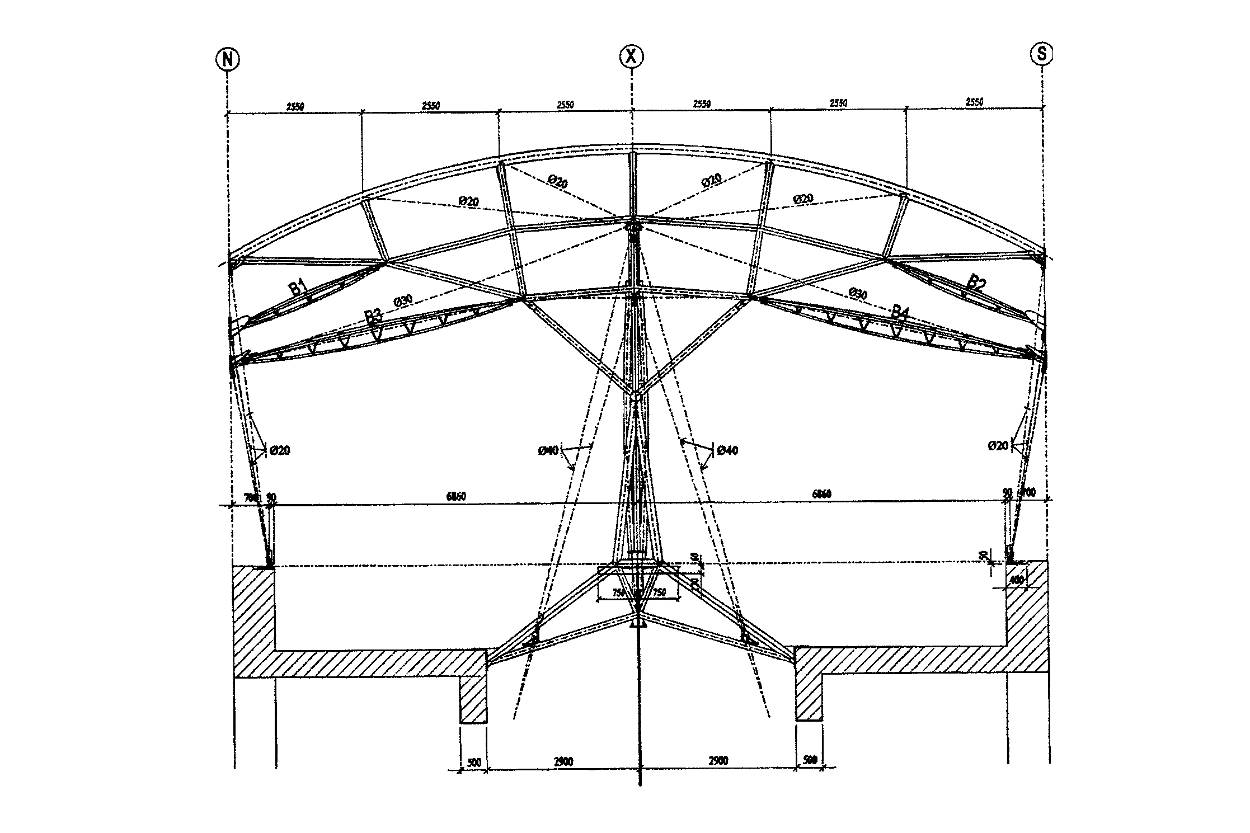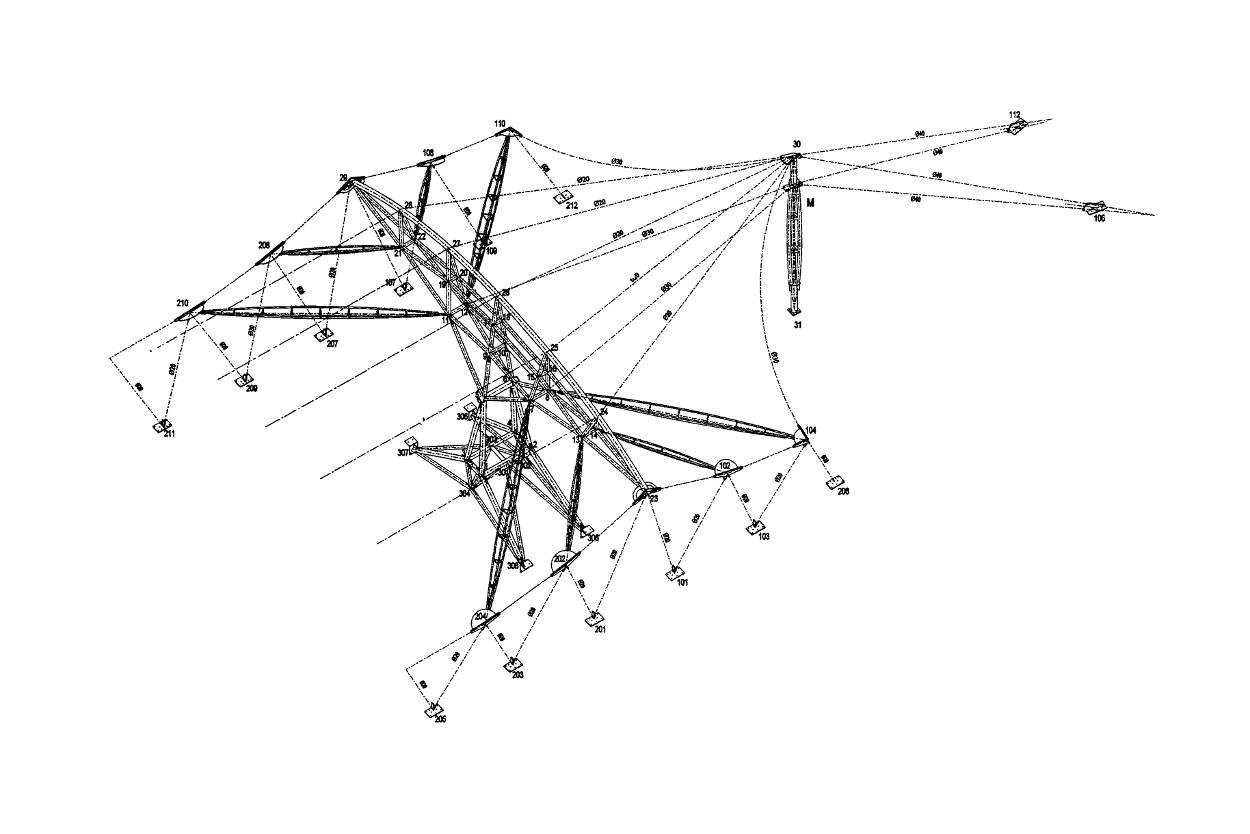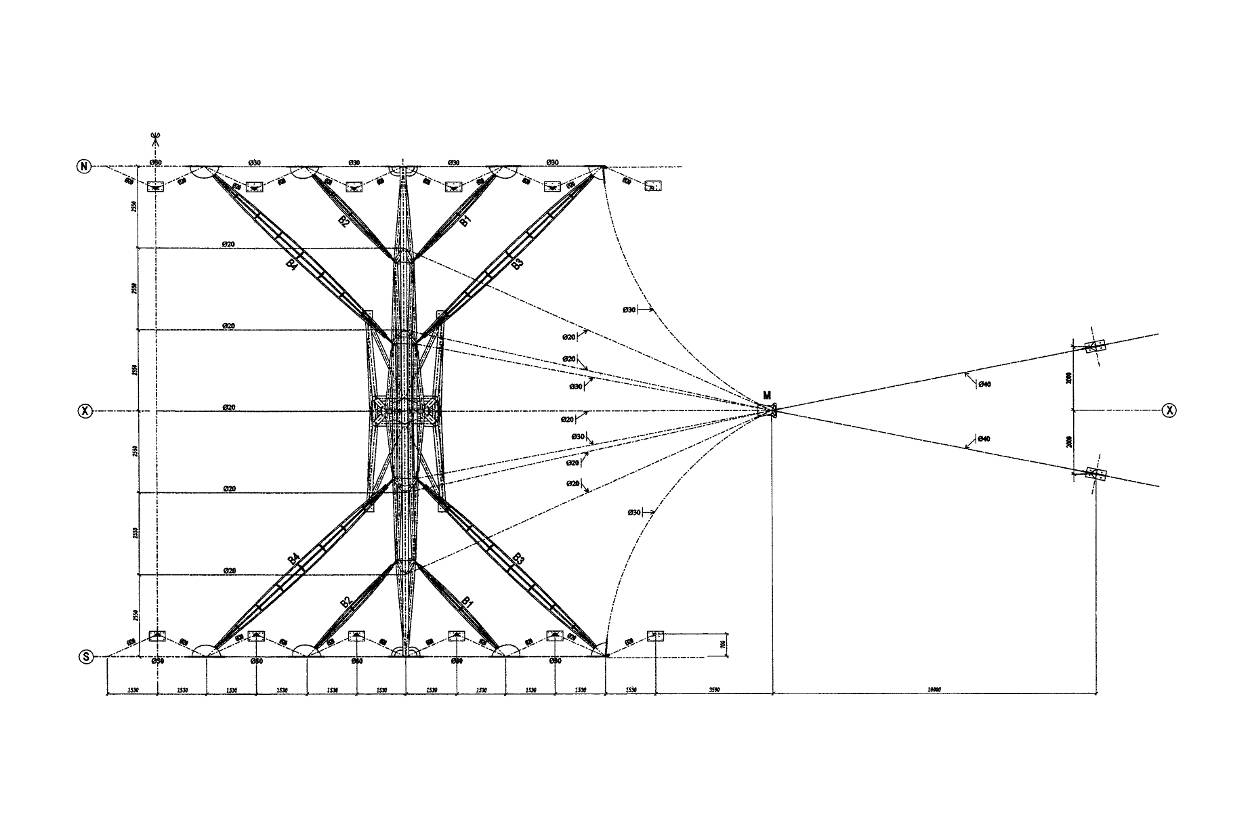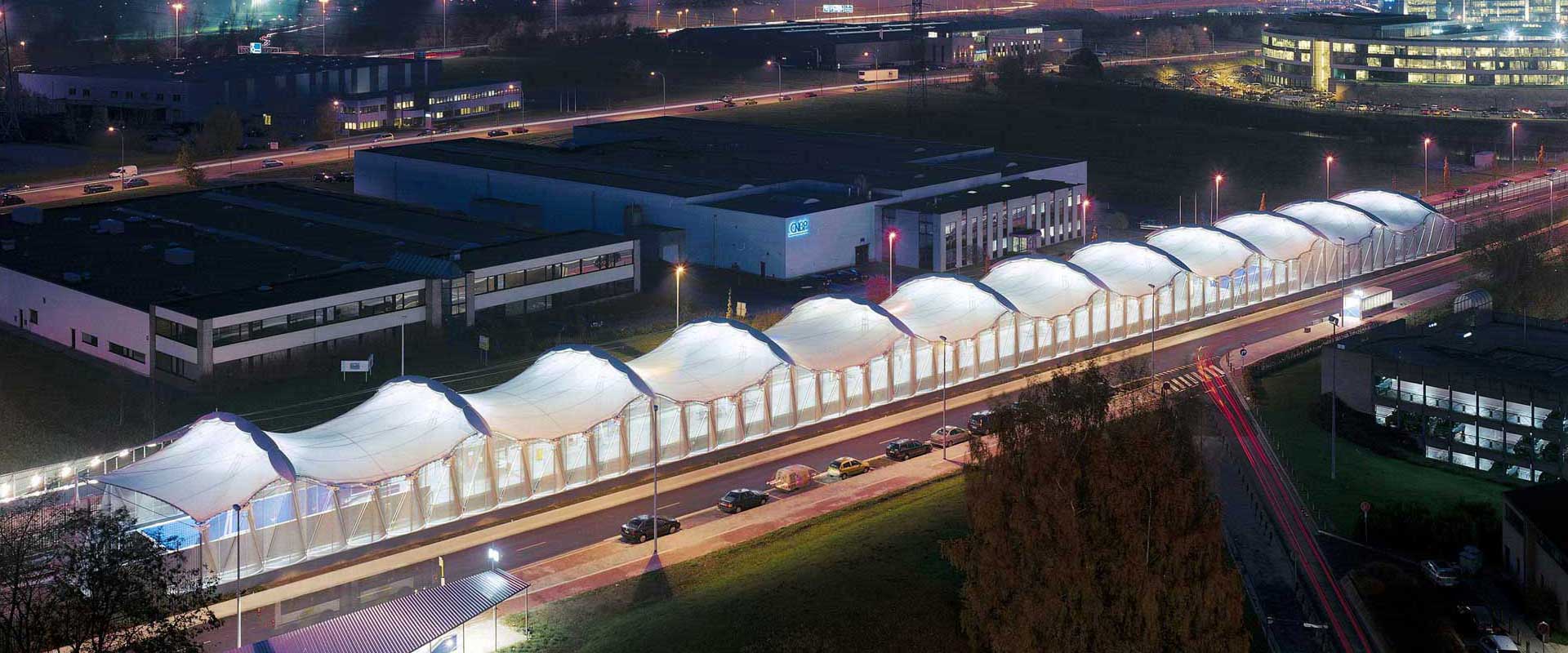
283 – Erasmus Subway Station
Ministry of the Brussels Capital Region, Administration of Equipment and Transport
Brussels
BELGIUM
2,334 sqm (1992-2003); (01-283).
– Architecture
– Construction management
– Mechanical, electrical, plumbing engineering
– Project management
– Quantity surveying
– Structural engineering
2003.02.10
The metro station near the Erasmus hospital is an elevated station, enhanced by the lightness of its tensile fabric roof cover. The central platform is accessible from two tunnels. The main entrance is located in the existing tunnel which at present covers one of the access roads to the hospital.
This tunnel is divided in two parts : one part being dedicated to traffic circulation, the other to pedestrians. The entrance hall opens onto the middle of the pedestrian tunnel which is pierced by a large light shaft to provide daylight and open up the entrance hall space. An escalator, stairs and a hydraulic elevator for the disabled lead to the central platform, where the ticket office and the ticket dispensers are to be found.
Pedestrians going through this entry pass under the base of one of the structural frames, discovering and experiencing the station as they progress upwards. A second central staircase, at the other end of the station, leads to a tunnel which connects the two sidewalks of the Lennik roadway.
The central platform, the entrance hall and a part of the pedestrian tunnels are covered by a tensioned fabric (1), shaped like a successive series of horse saddles. This shape results from the search for a minimal structure. The frameworks consist in metal structures in the shape of large candelabre (2). The side façades are made out of stainless steel fabric cones sections which protect the users from lateral winds.
The equipment of the station platform is in keeping with the deliberate use of limited materials and colours of the station : white textile, grey tiles, galvanized steel, clear glass, in accordance with the STIB- MIVB (Transport Authority of Brussels) standards.
The will to create a coherent space in an existing difficult context is incorporated in the surroundings. Public light fixtures, road treatment, crash barriers, etc. required careful consideration, particularly in terms of integration within the overall design.
A public space is provided for the passengers in front of the entrance of the tunnel on the side of the Erasmus hospital. Various exterior stairways facilitate the progression of passengers while awnings ensure their protection.
(1) The membrane is a fire resistant PTFE coated fibreglass fabric. Pretensioning stresses are approximately the same at every point. The textile fabric is attached at various points on the upper arches of the steel frames and on boltropes along the edges which are held stable by cables or stainless steel bars and compressive struts.
(2) The frames are trussed to the bare minimum and are constituted of steel tubes of circular section. The upper profile of the frames follows the curvature of the roof. The frameworks take up all the compressive loads while the tie-rods of the side façades bear the tensile stresses.
- LES CARNETS D’ARCHITECTURE CONTEMPORAINE n°2, ” Philippe Samyn : maquettes”, CFC-Editions, Bruxelles, 1997, 96 pp. ; (Belgium)
- L’ARCA INTERNATIONAL 21, March 1998, pp. 24-27 ; L’Arca 124, March 1998, pp.24-27 ; (France – Italy)
- Proceedings of the TECHTEXTIL SYMPOSIUM April 12- 15 1999, Frankfurt. ” Innovative construction : 5.3. Exemplary Membrane Architecture” ; 10 pp. ; (Germany).
- BAUEN MIT TEXTILIEN, Heft September 3rd 1999, Ernst & Sohn-a Wiley Company. (ISSN 1435-6430), pp 6-9 ; Ph. Samyn, J. Schiffmann, L. Kaisin : “Die Metrostation Erasmus Krankenhaus in Brussel” ; (Germany).
| 01-283 | SUBWAY STATION |
| Client: | MINISTERE DE LA REGION DE BRUXELLES-CAPITALE, Administration de l’Equipement et des Déplacements, Service B2. |
| Architecture: | Partner: Gh. André. Associates : B. Darras, B. Calgagno, Q. Steyaert, L. Van de Velde, C. van Haeren, M. Veldekens. |
| Services: | TRACTEBEL DEVELOPMENT |
Marie-Françoise PLISSART
SAMYN and PARTNERS
The Erasmus Subway Station won the following award:
Septième Règles d’Or de l’Urbanisme (2004)
Seventh Urban Golden Rules
Mobility Prize, collective winner for the extension of the Erasmus subway
Staalbouw Wedstrijd 2004 / Concours Construction Acier 2004
Steel Construction Award 2004
First Prize, Special Jury Prize in the category “Non-residential building”
For plans sections and elevations, please refer to the archives section of the site available from the “references” menu.








